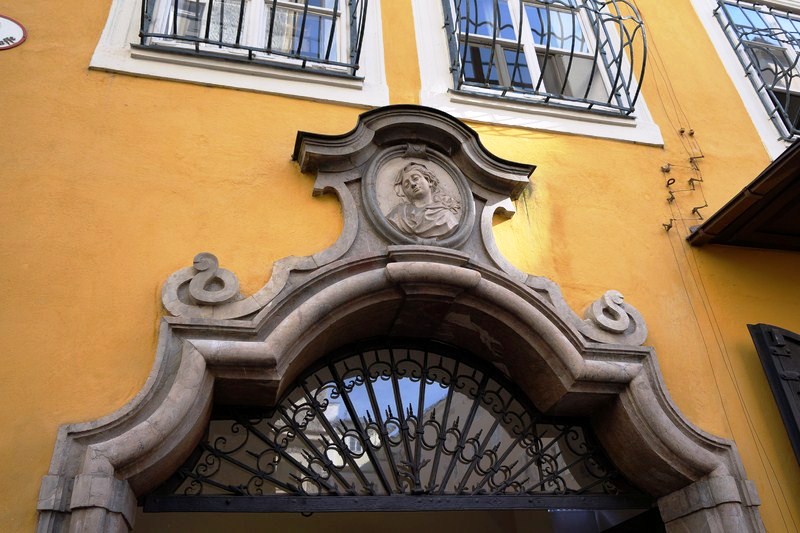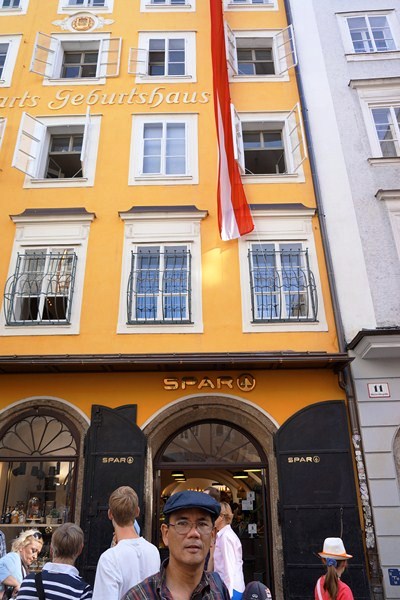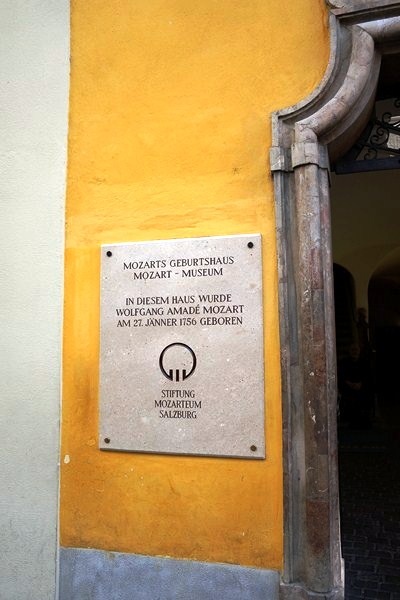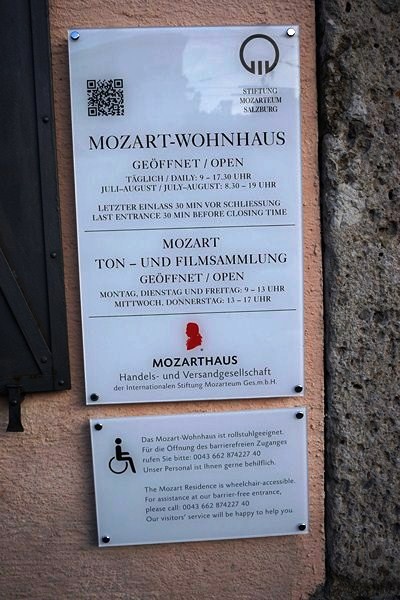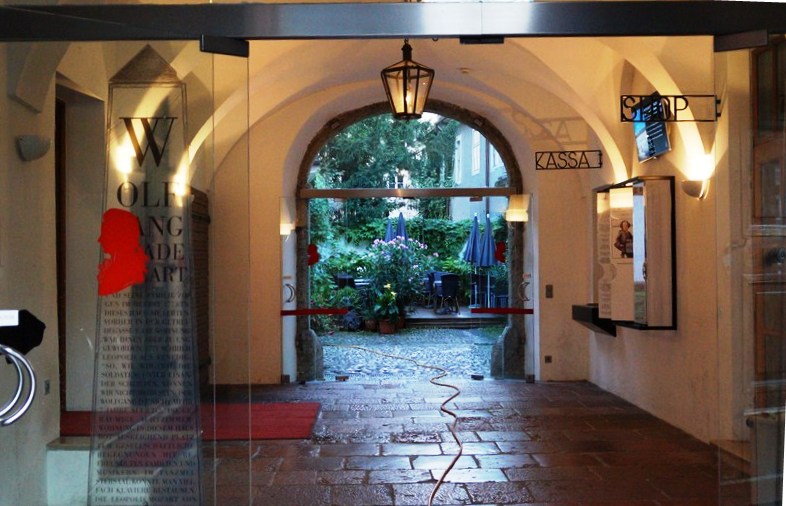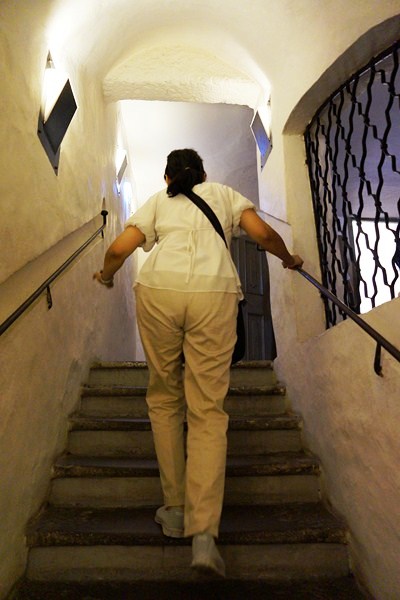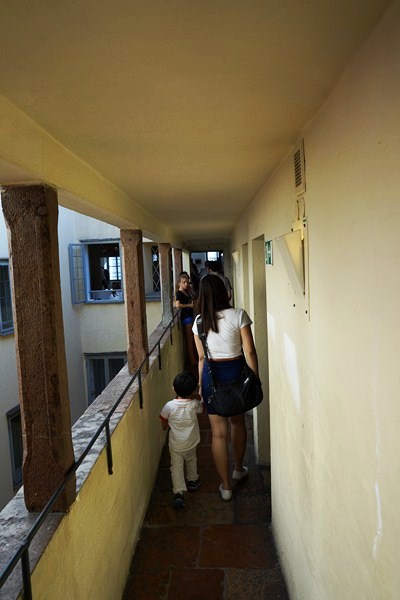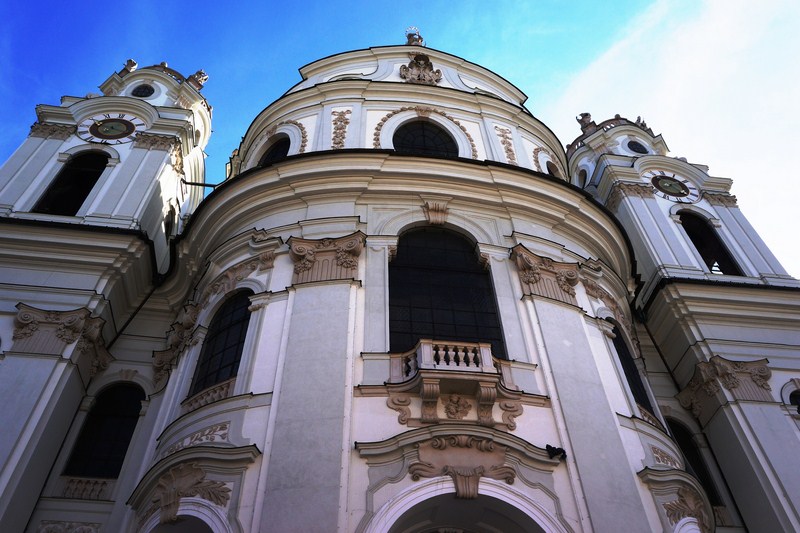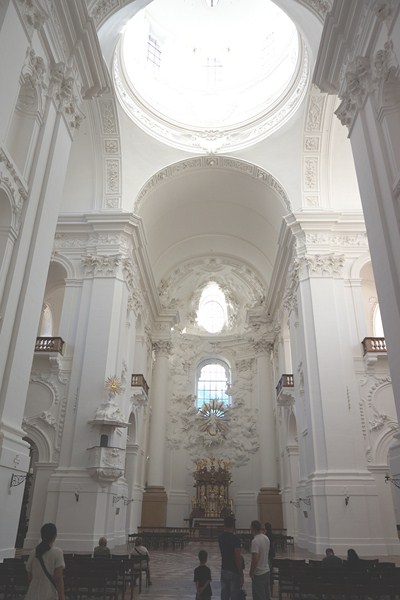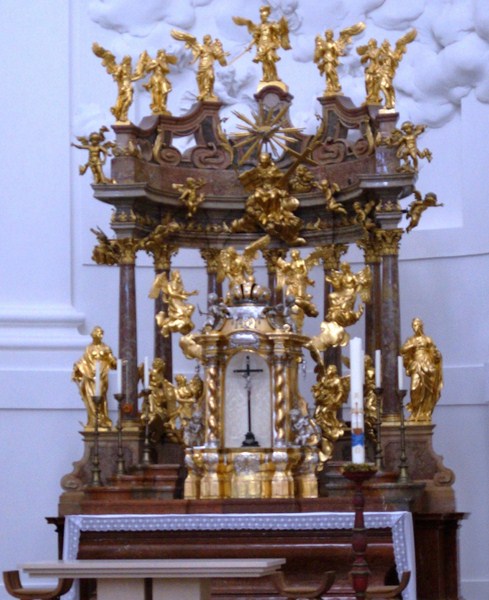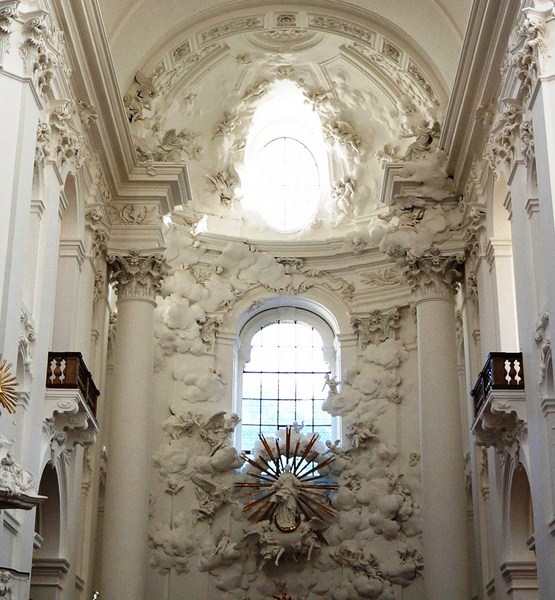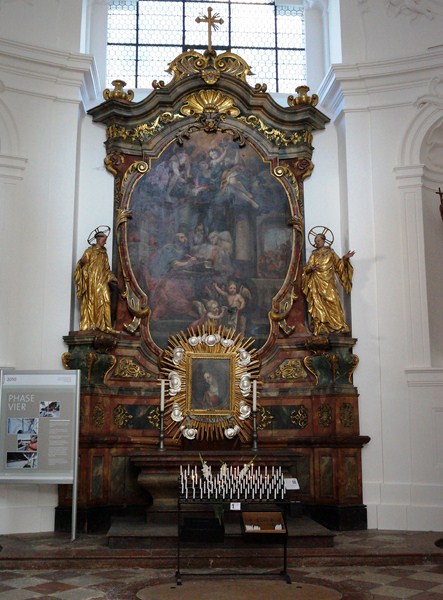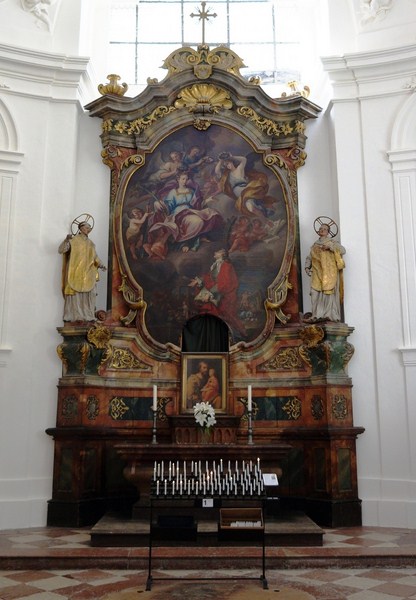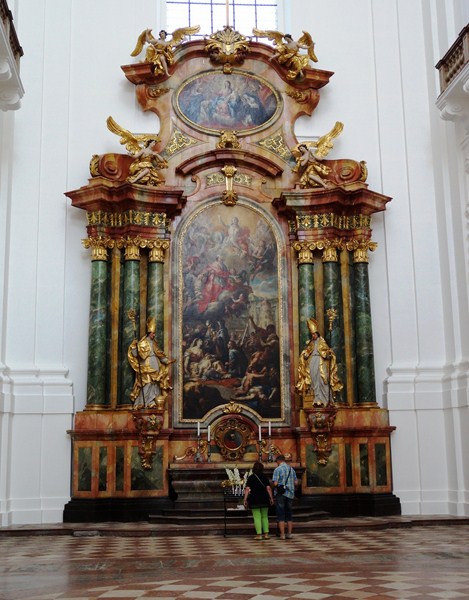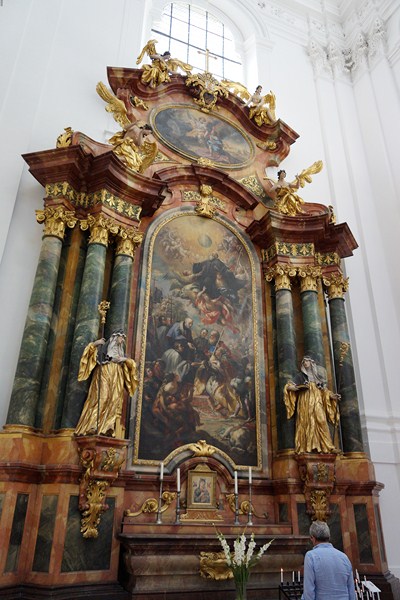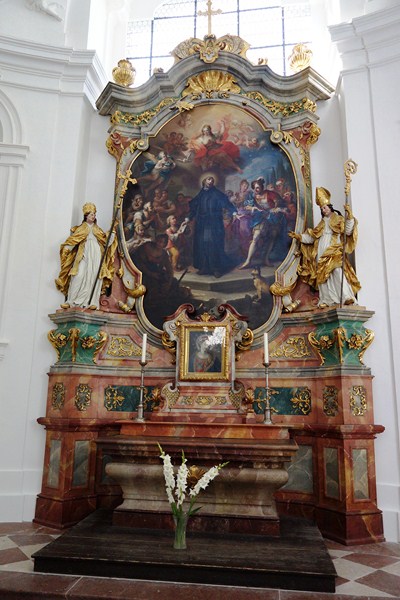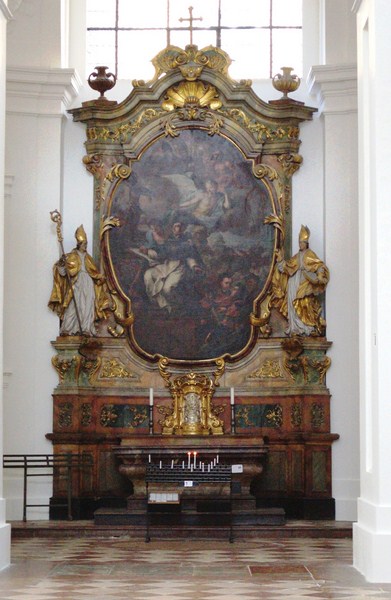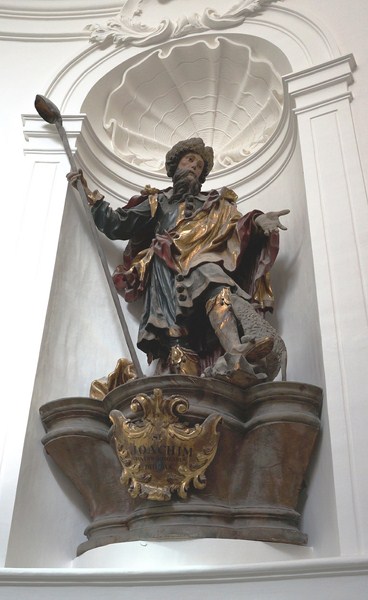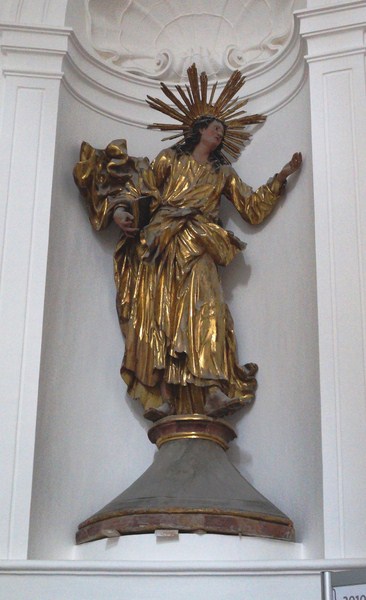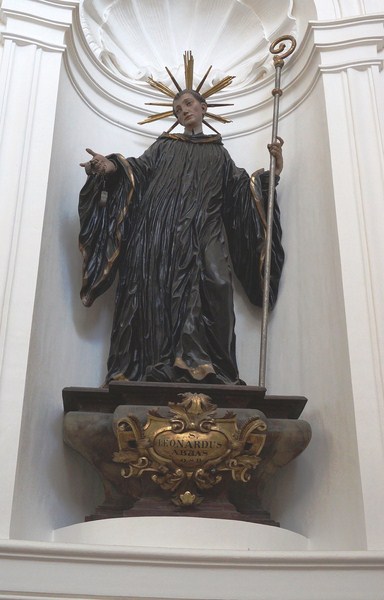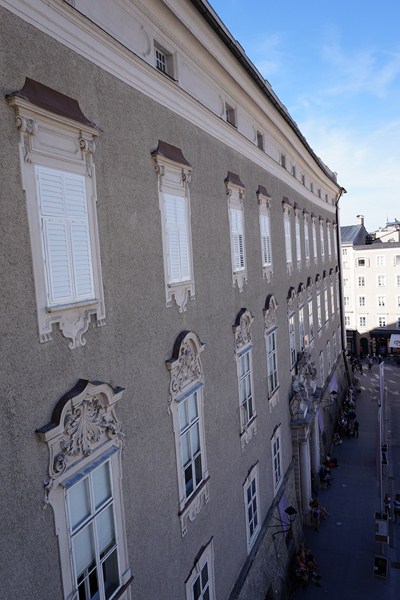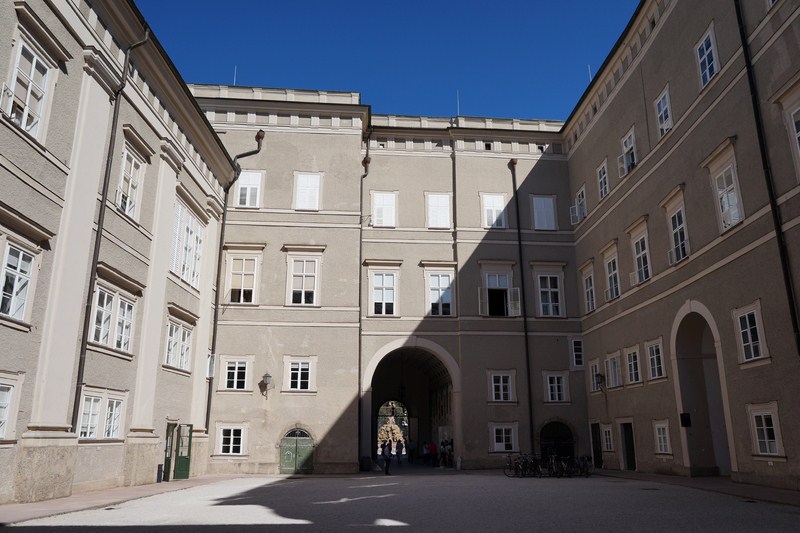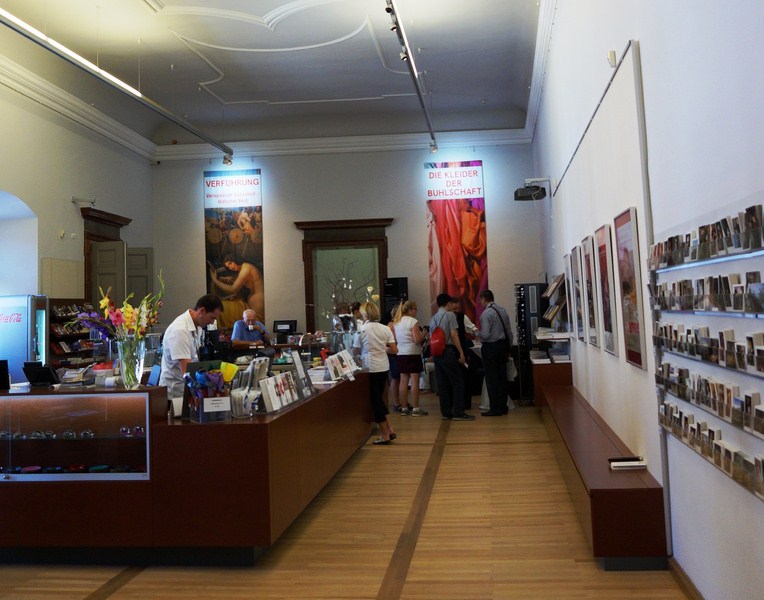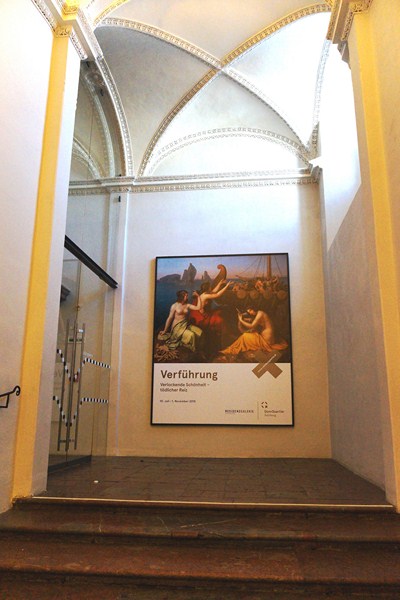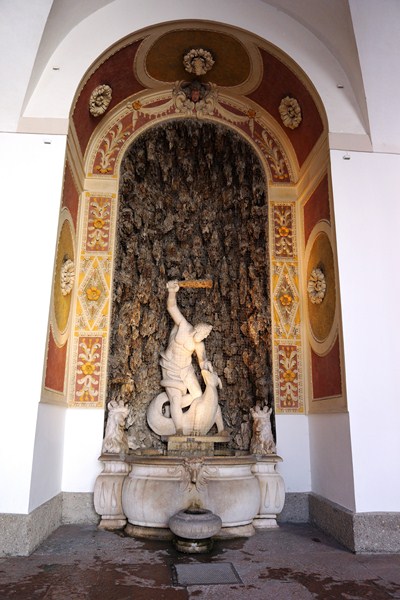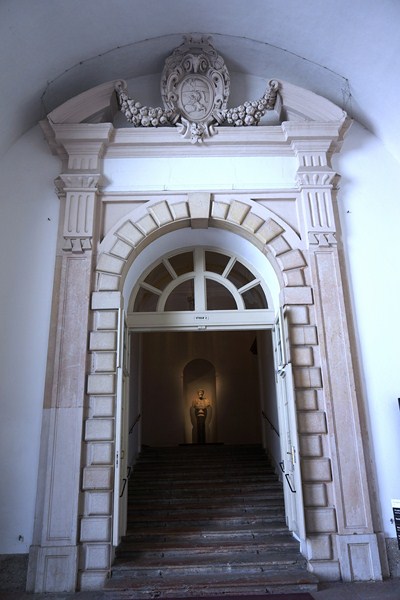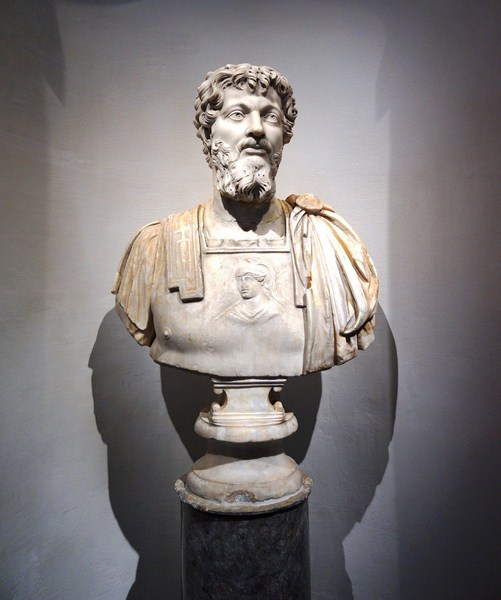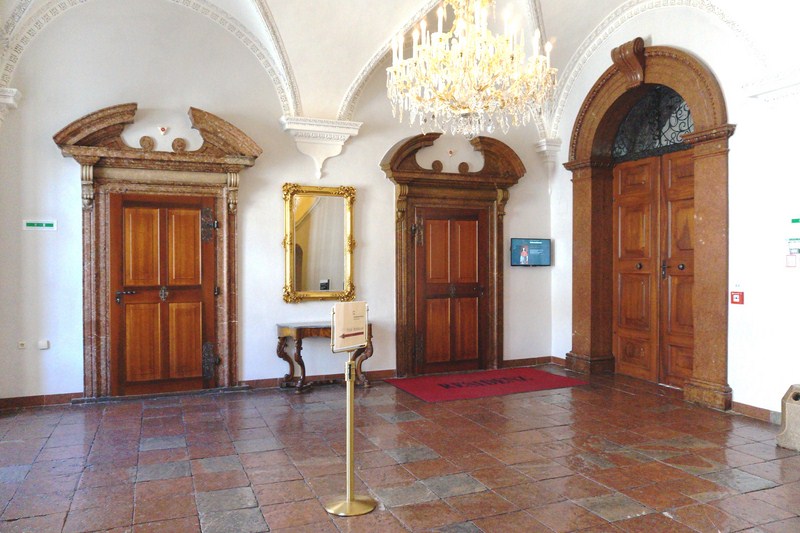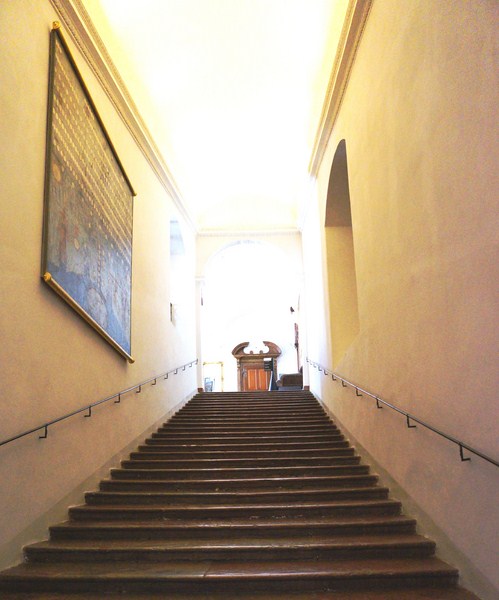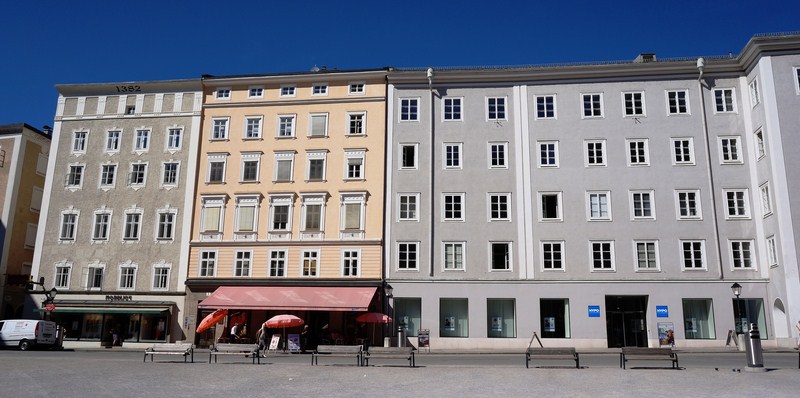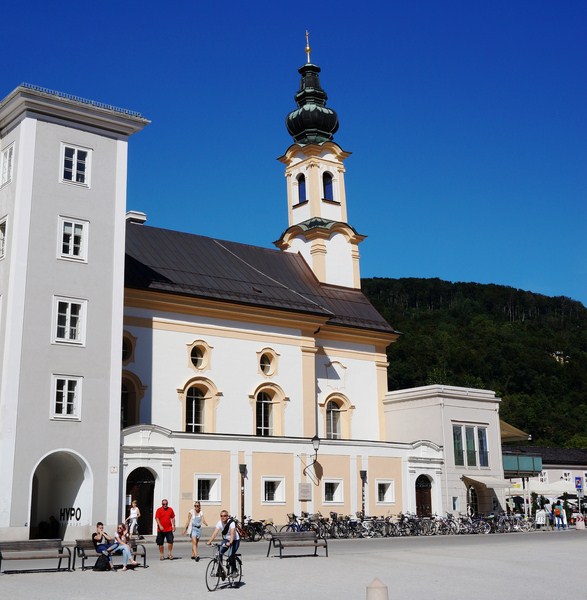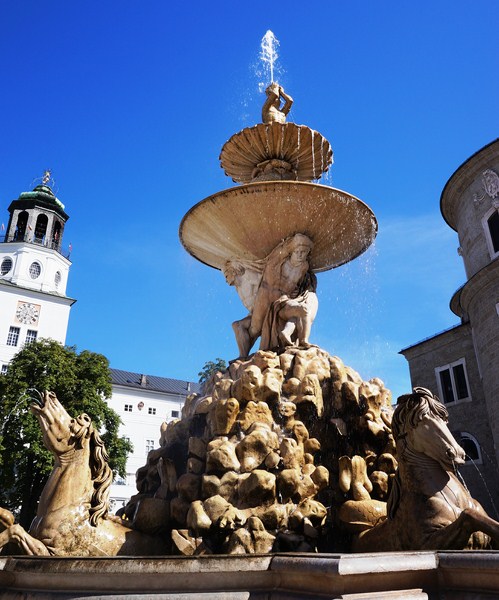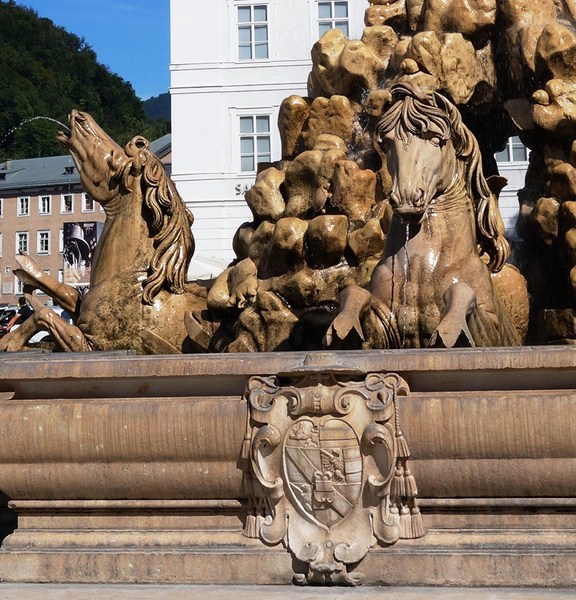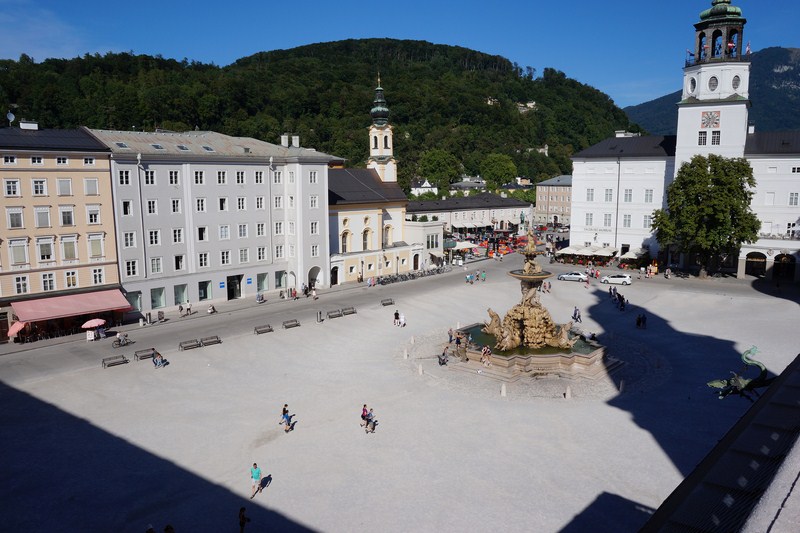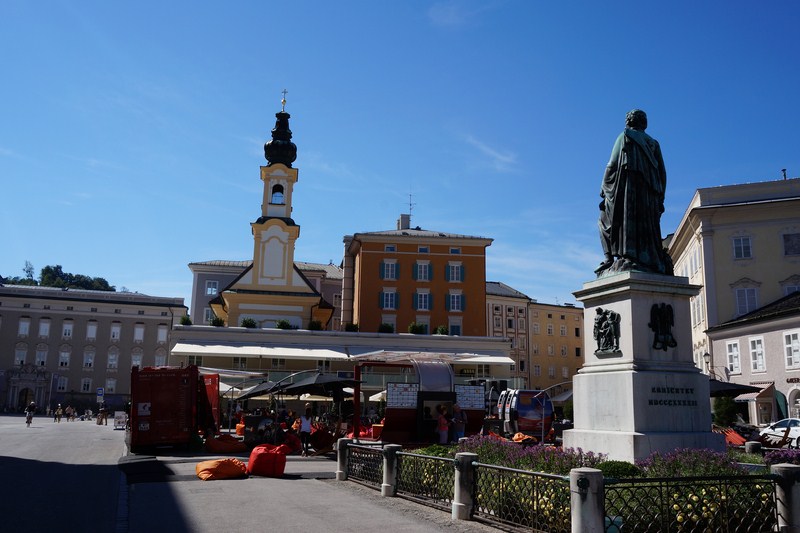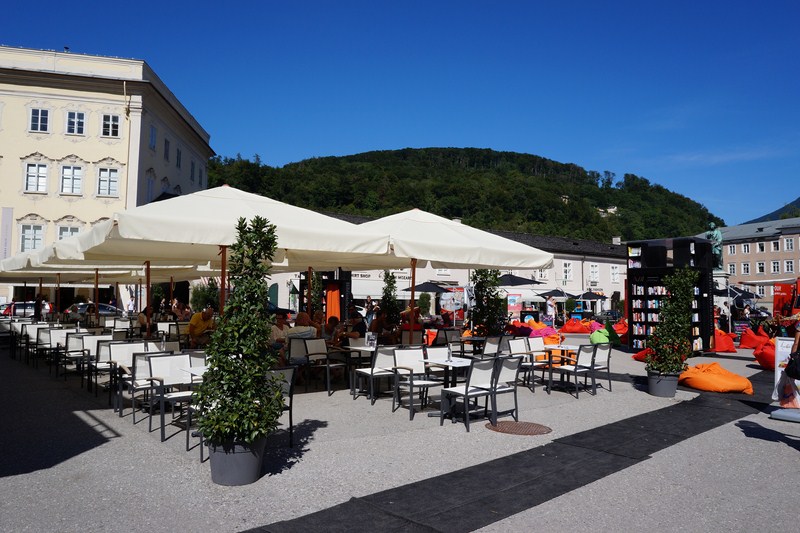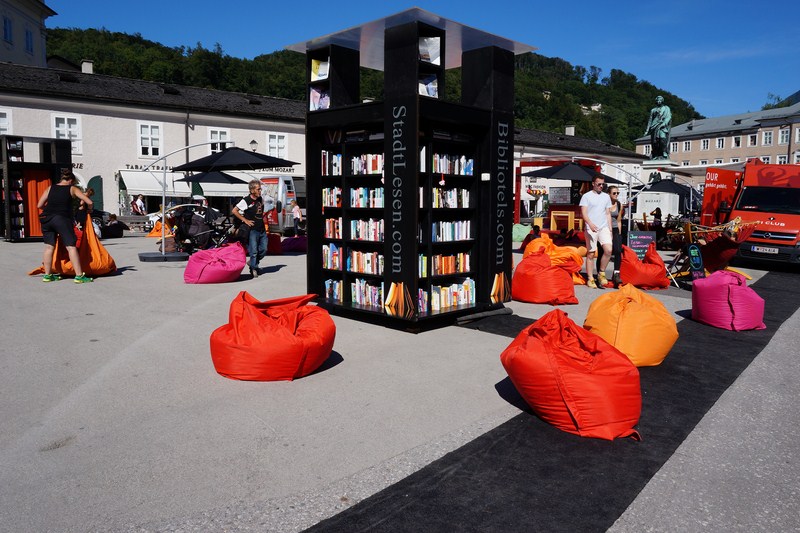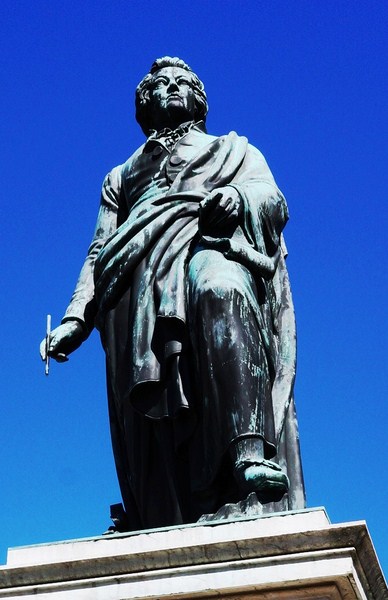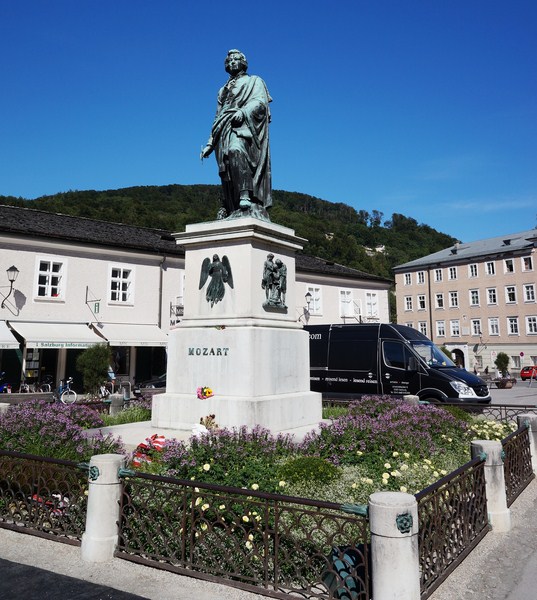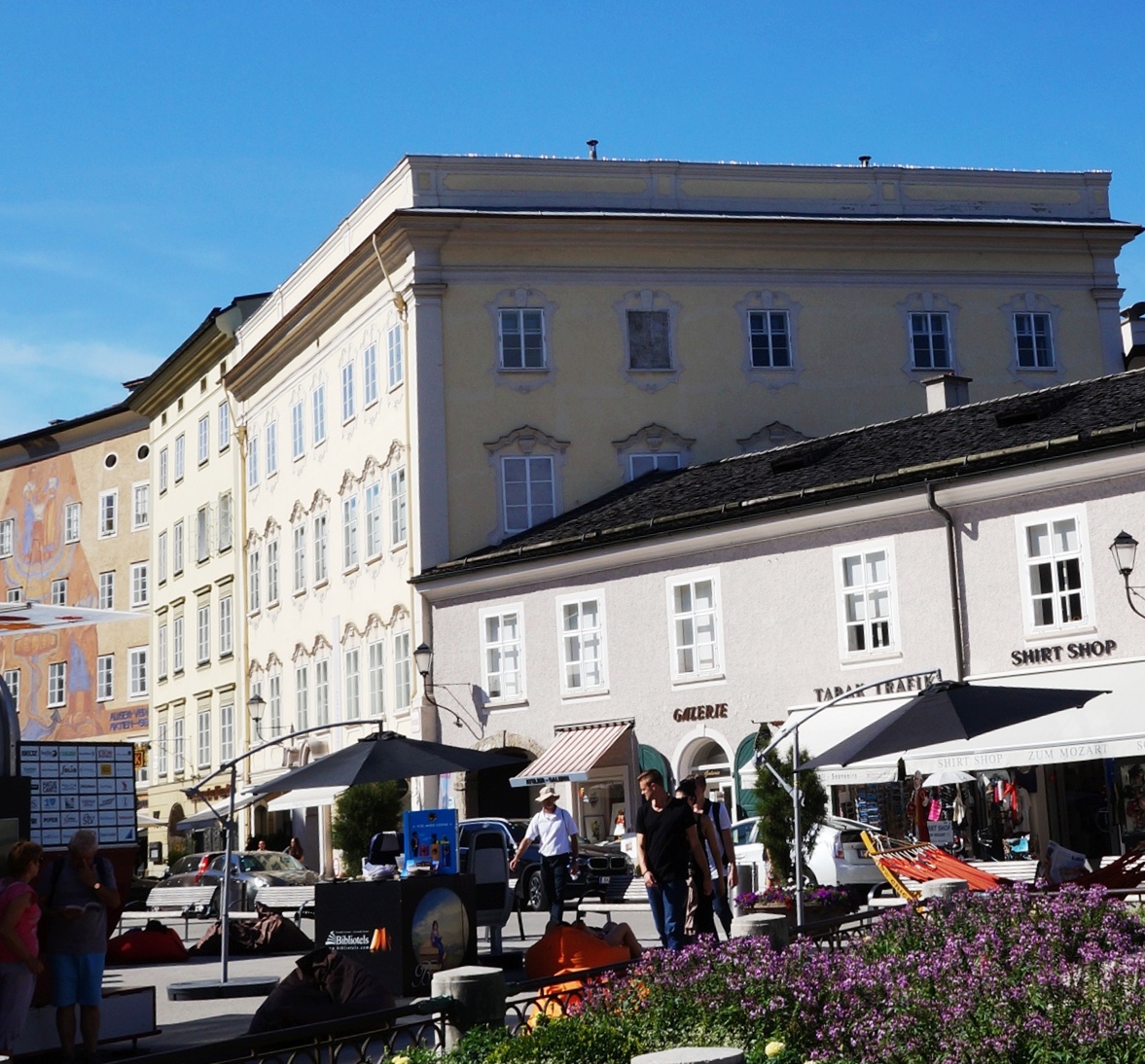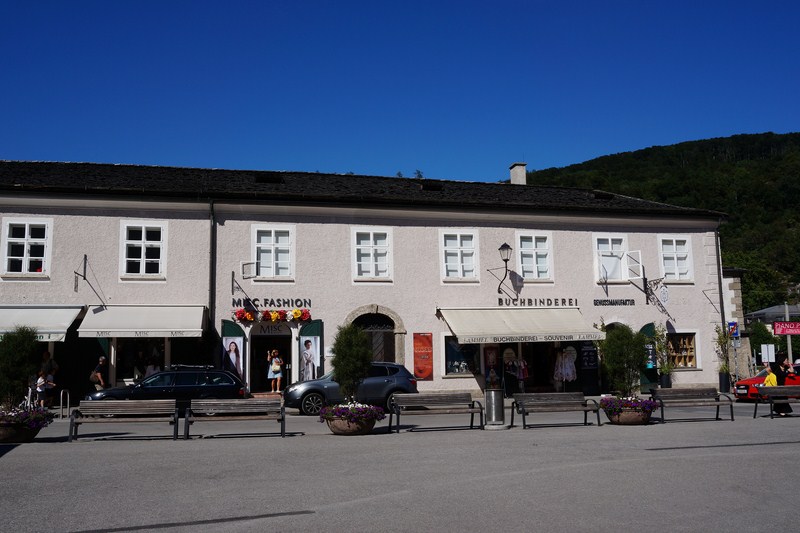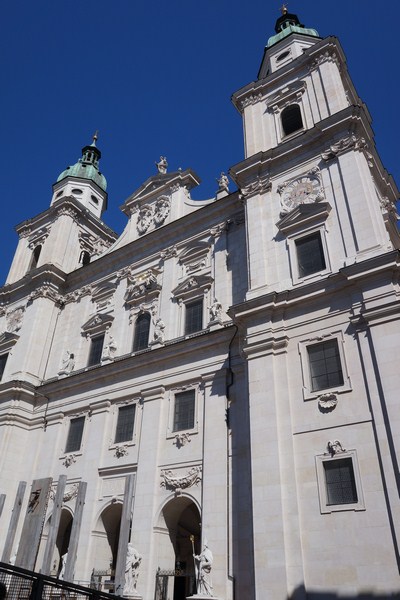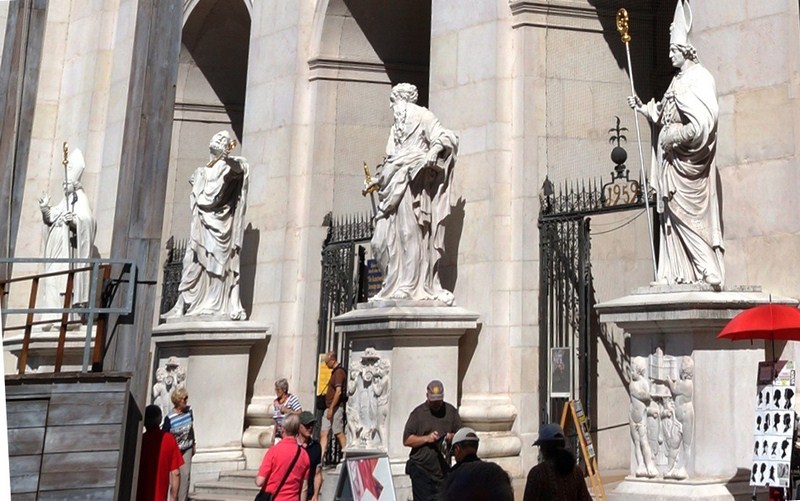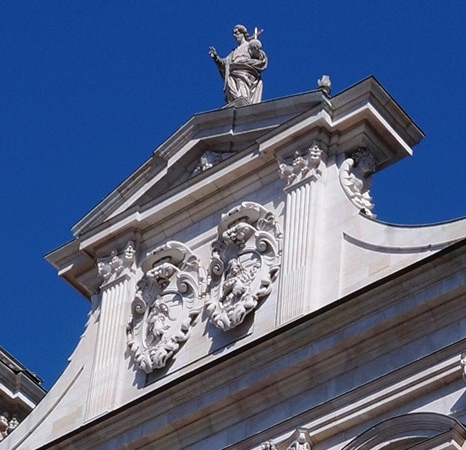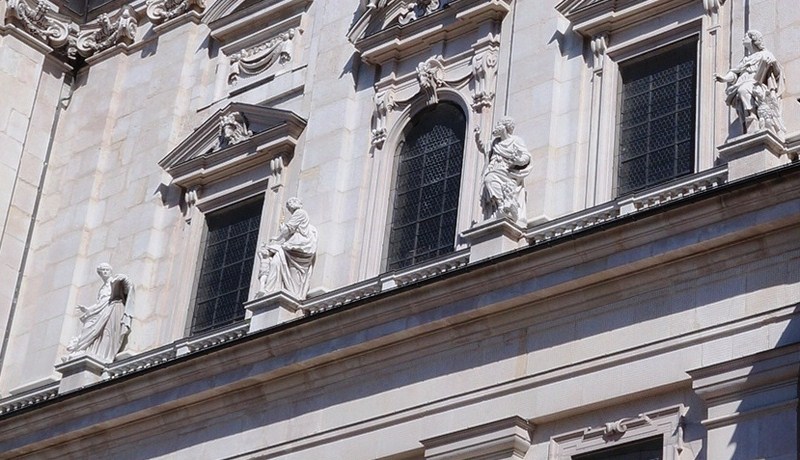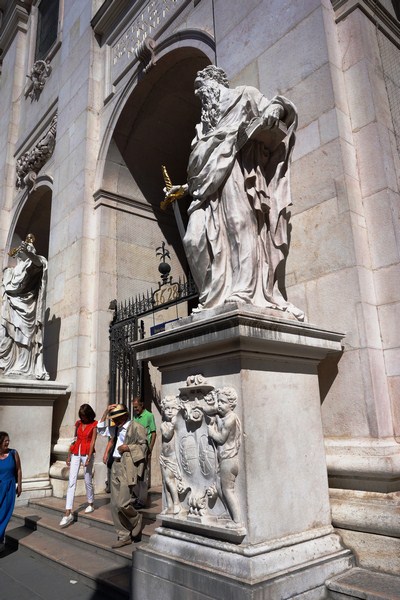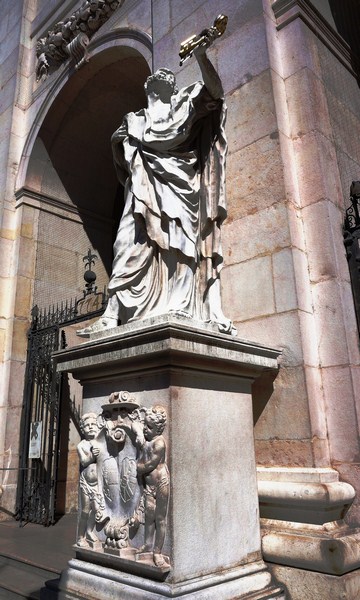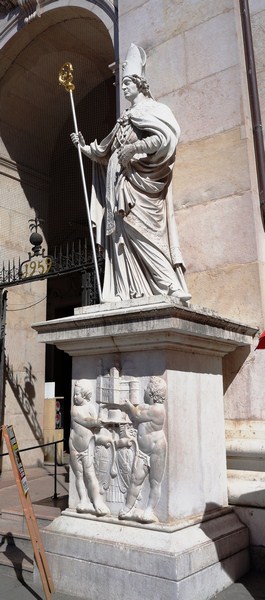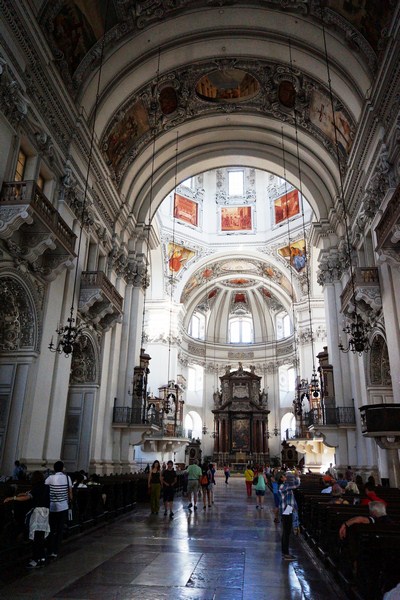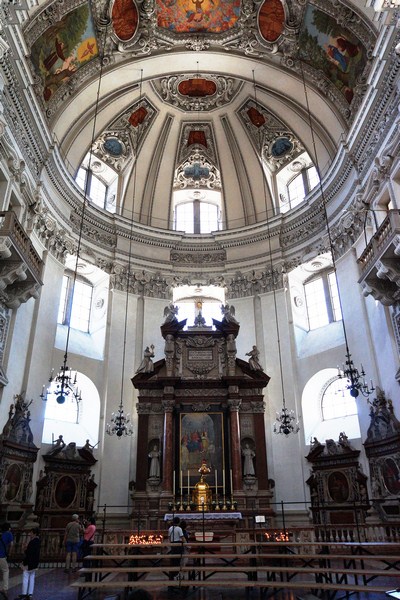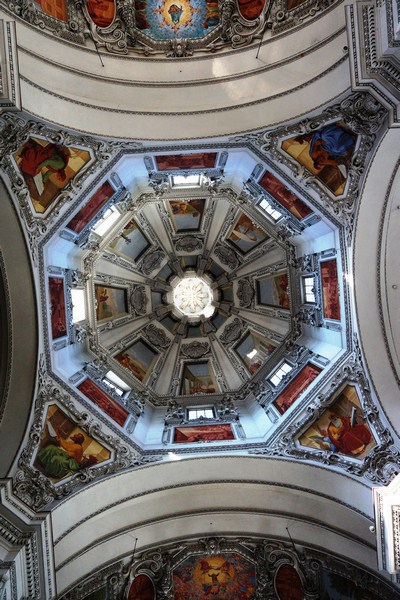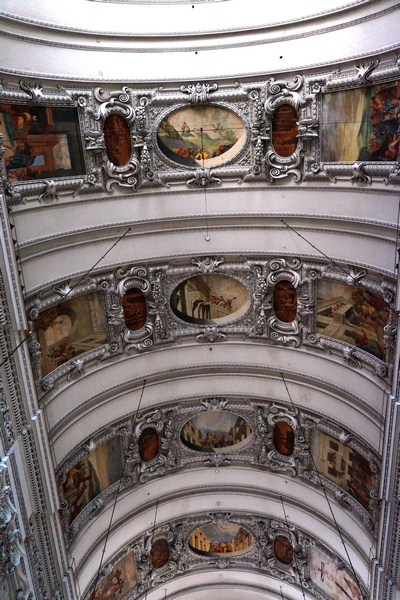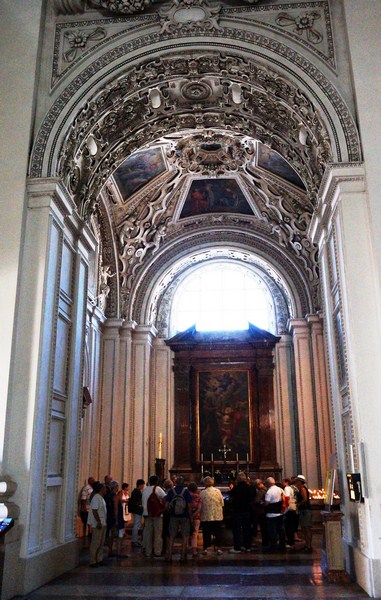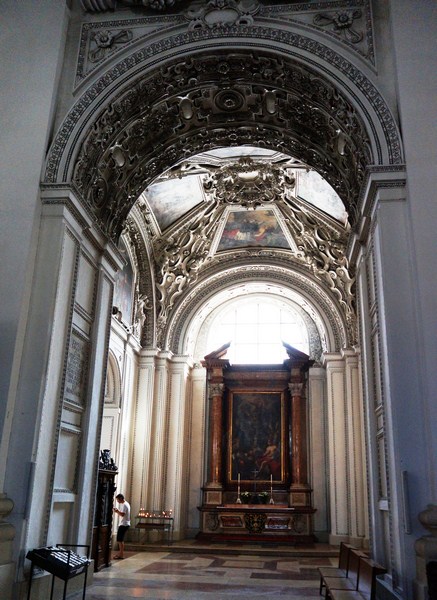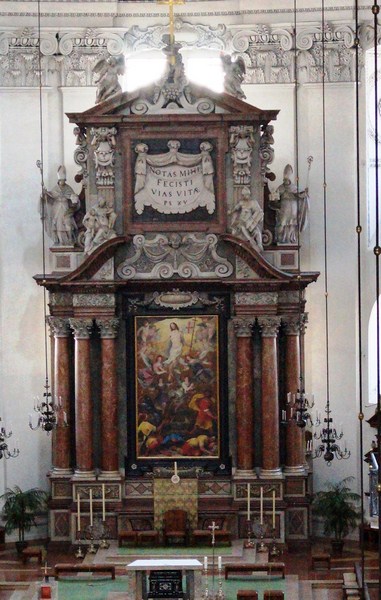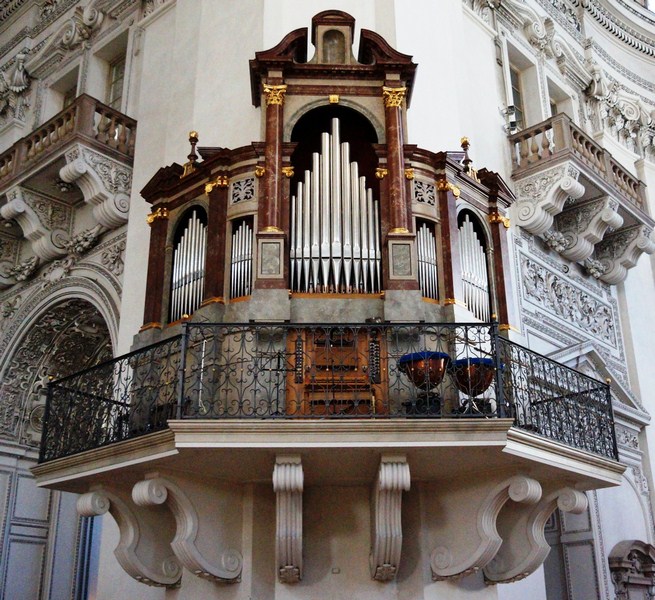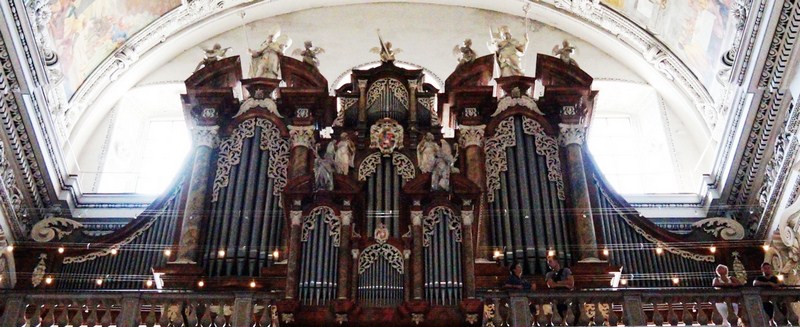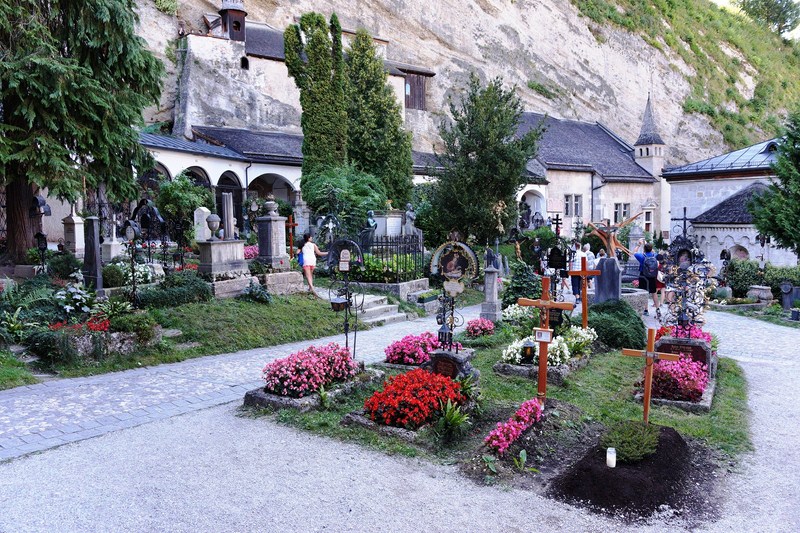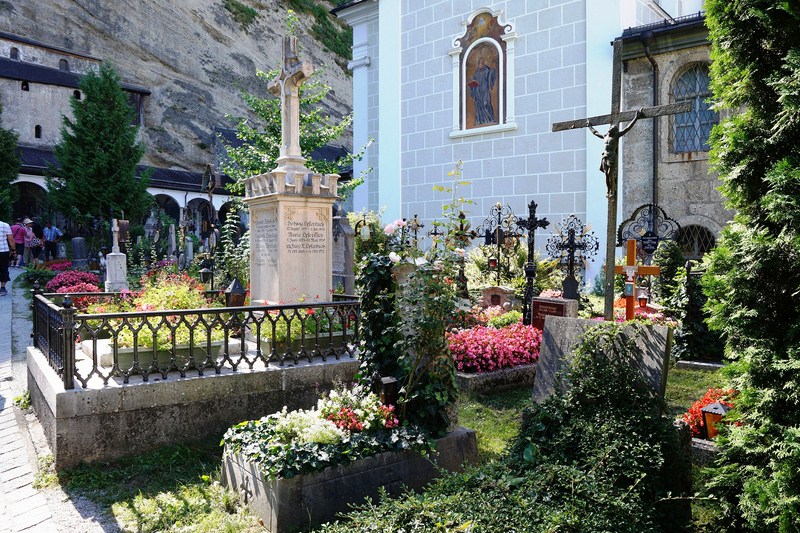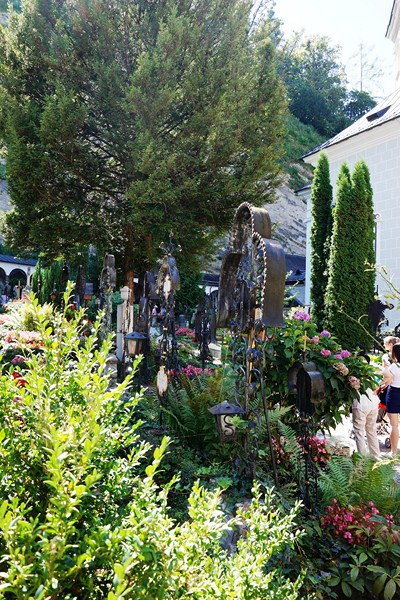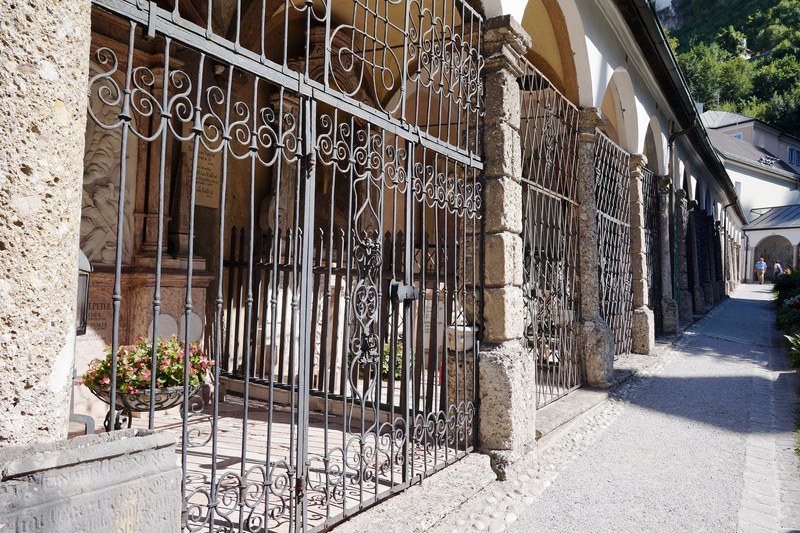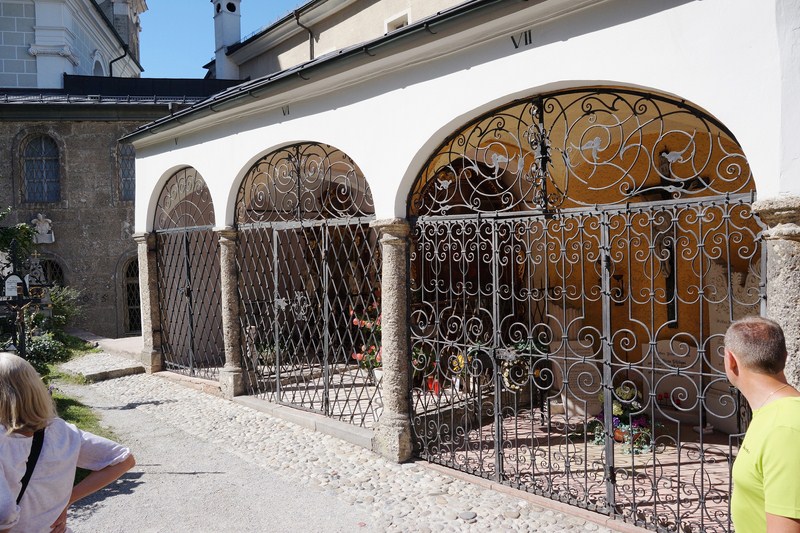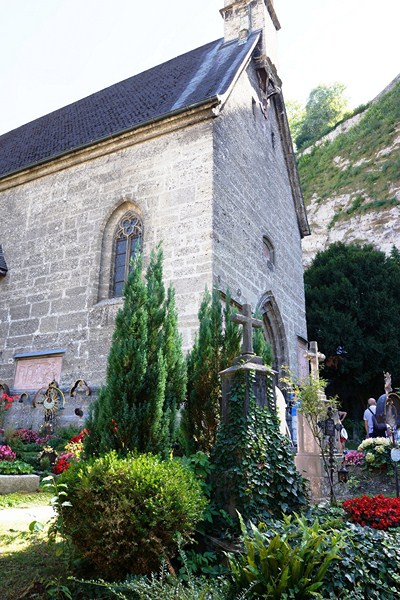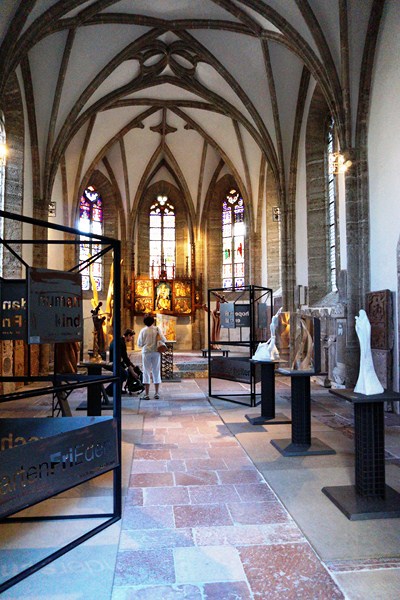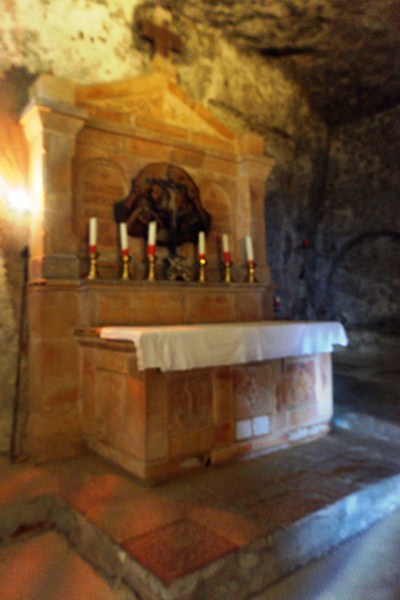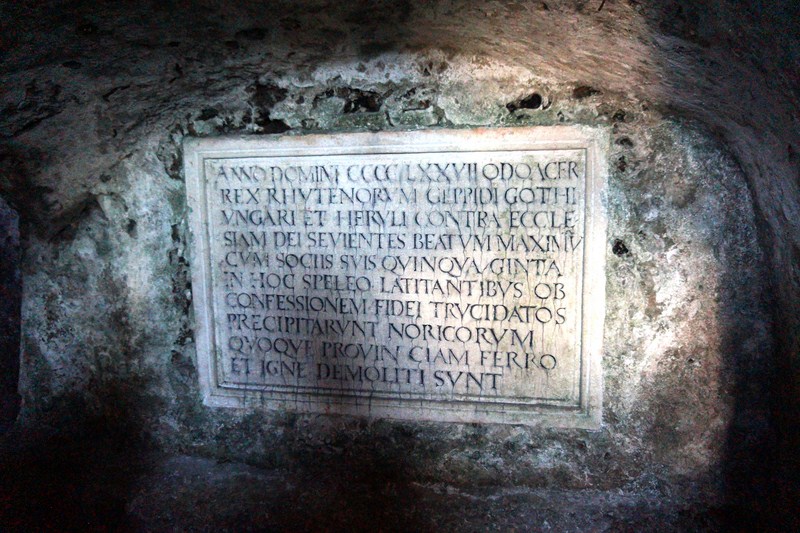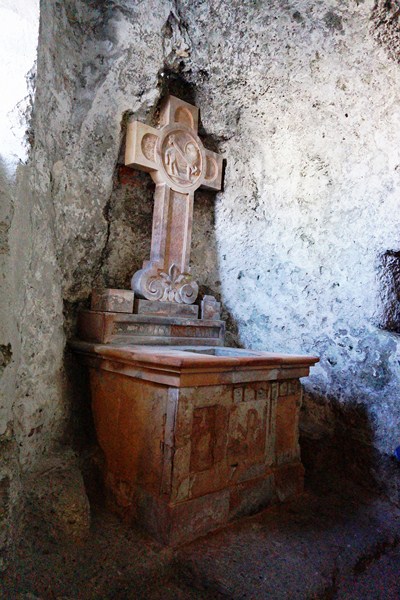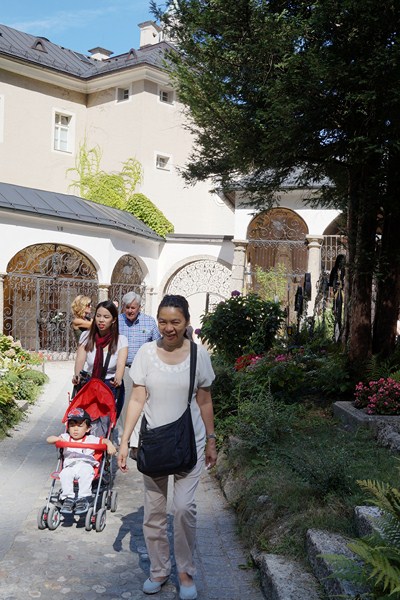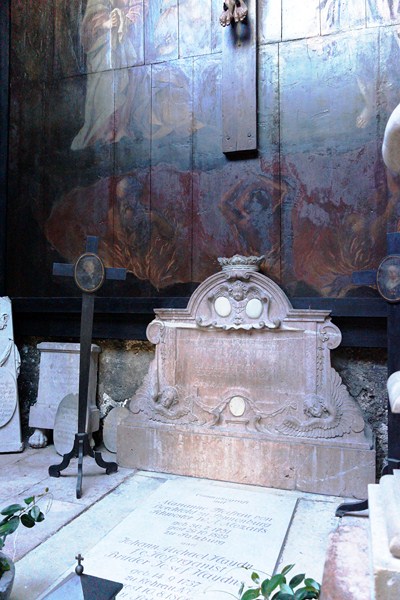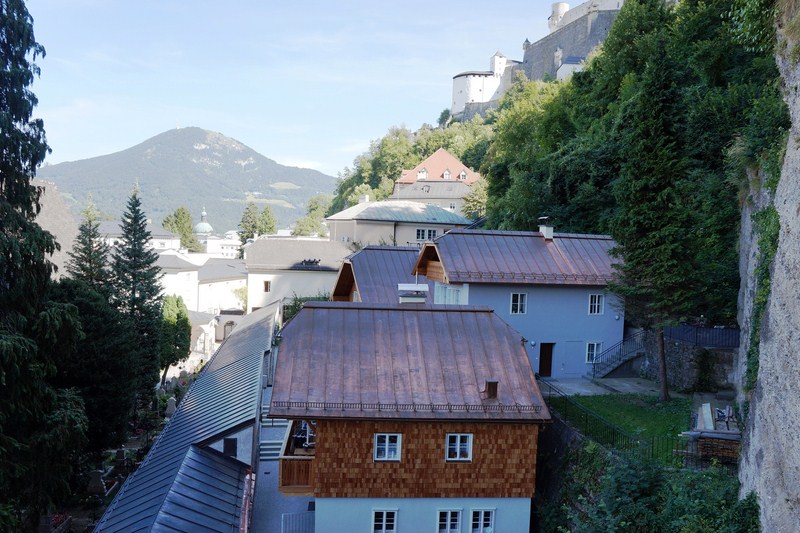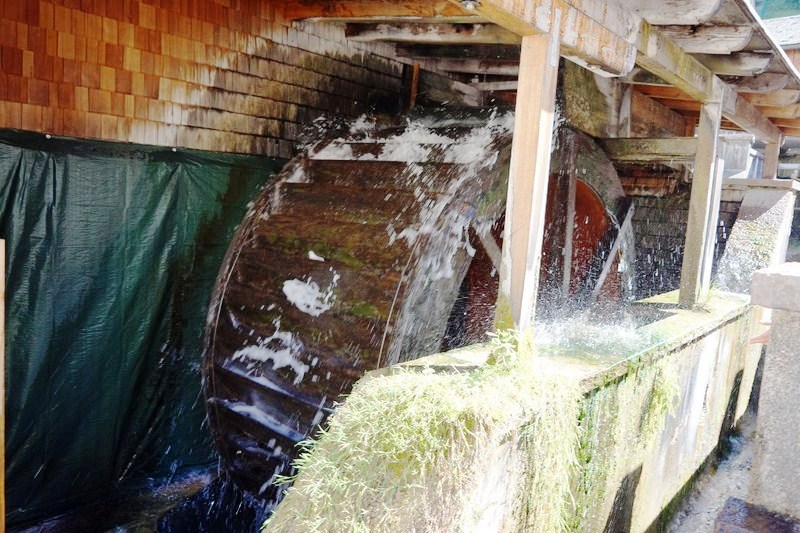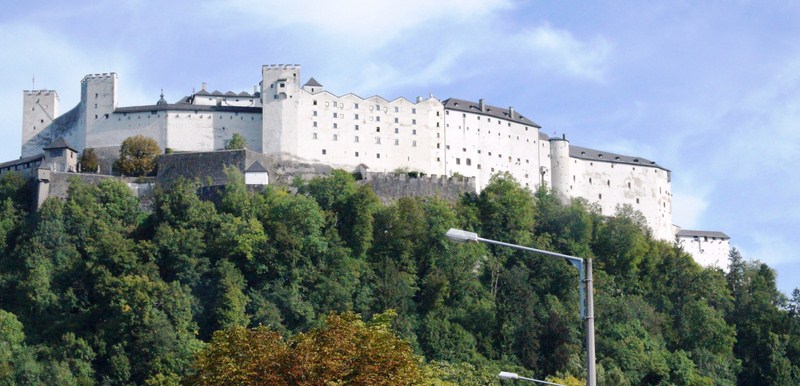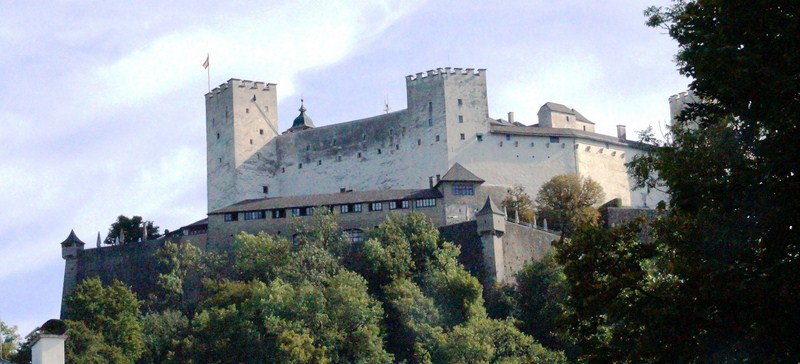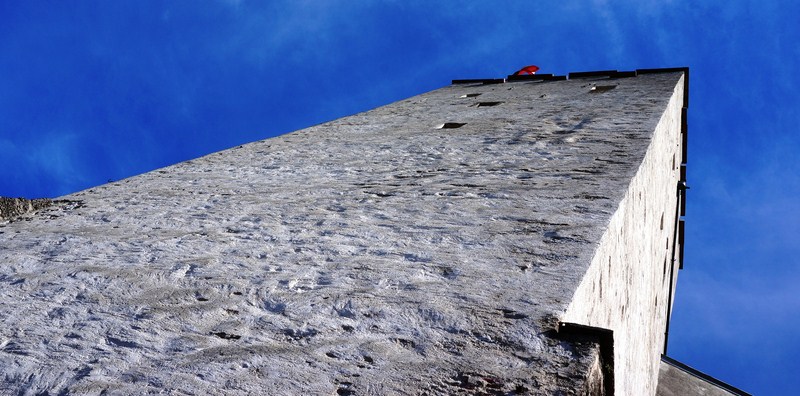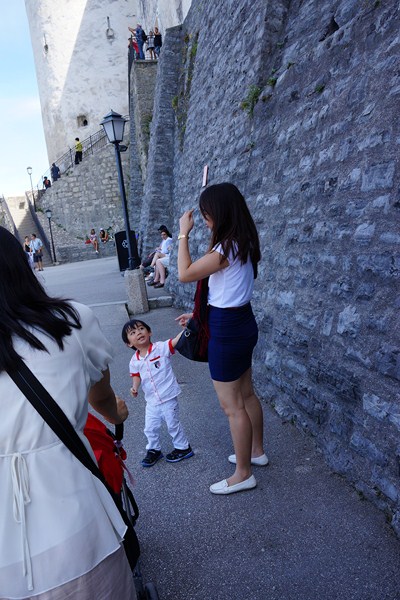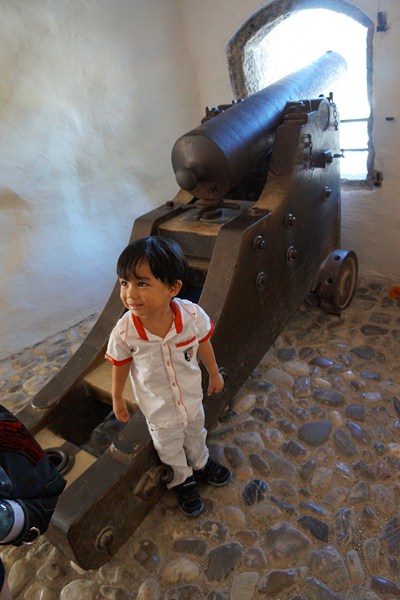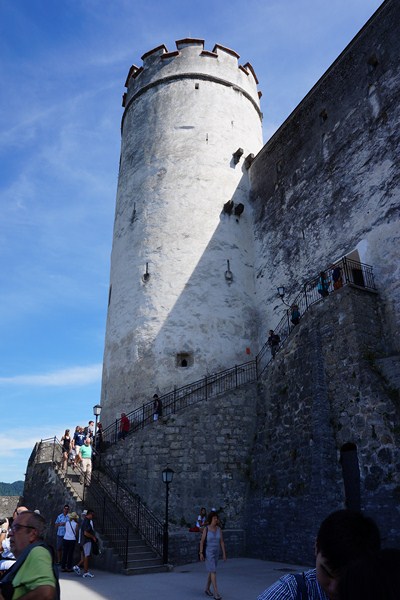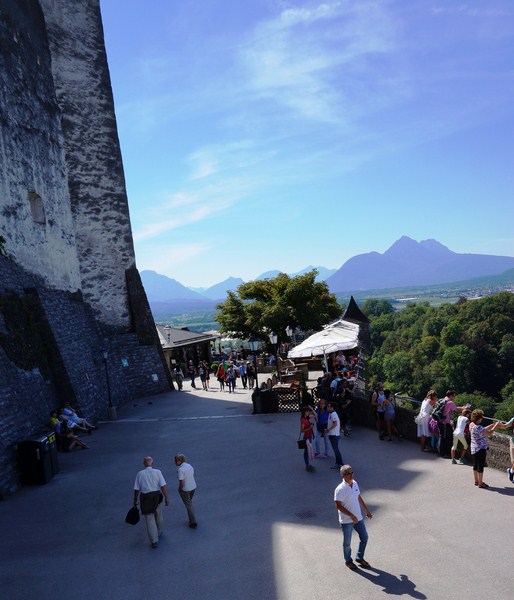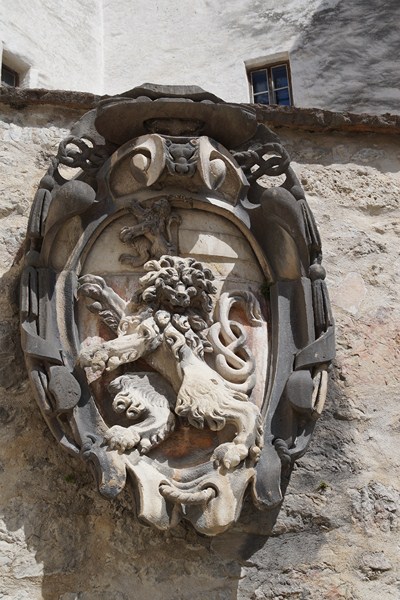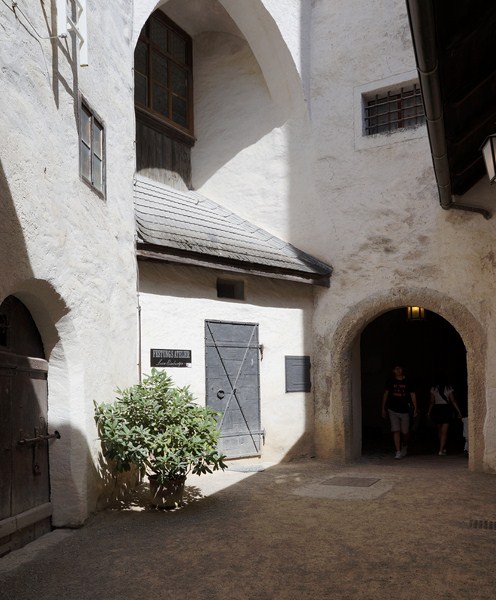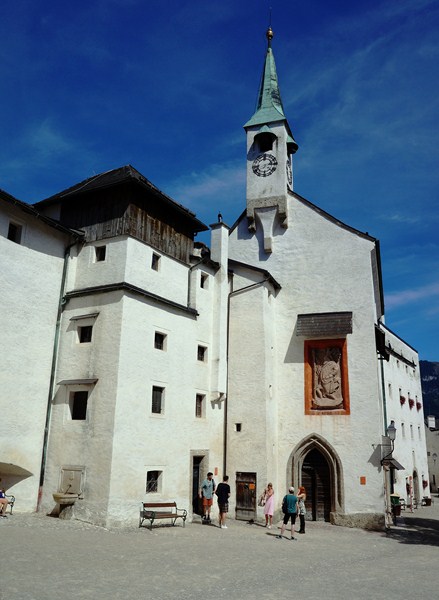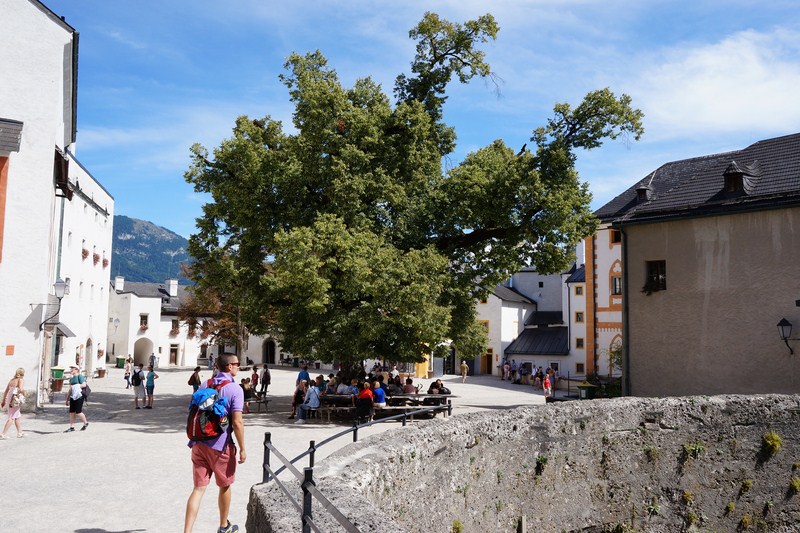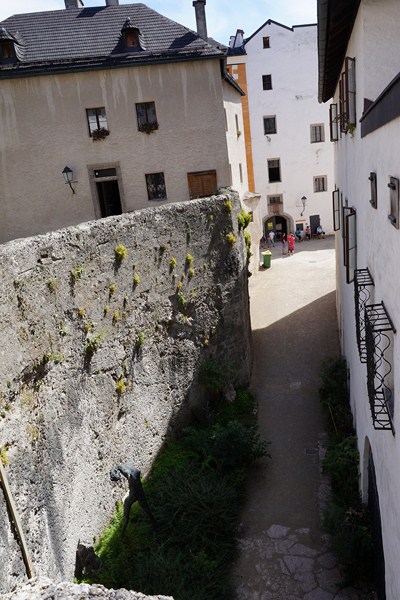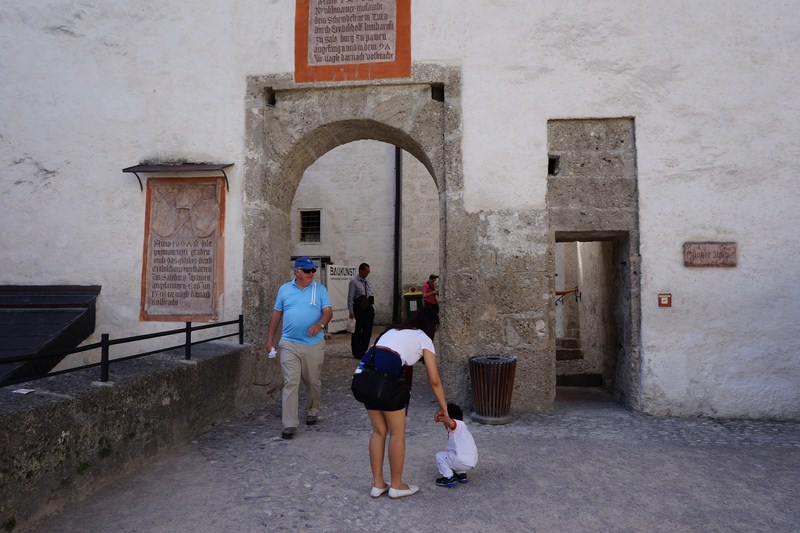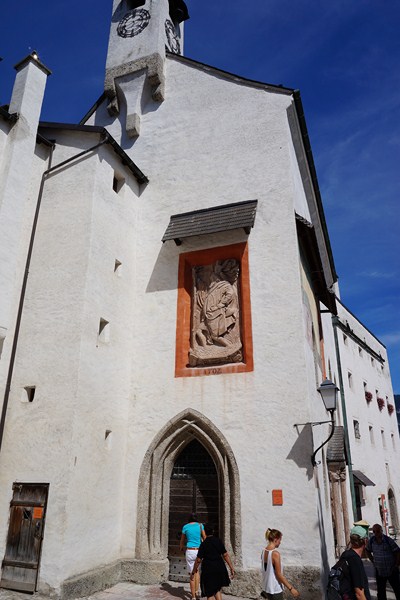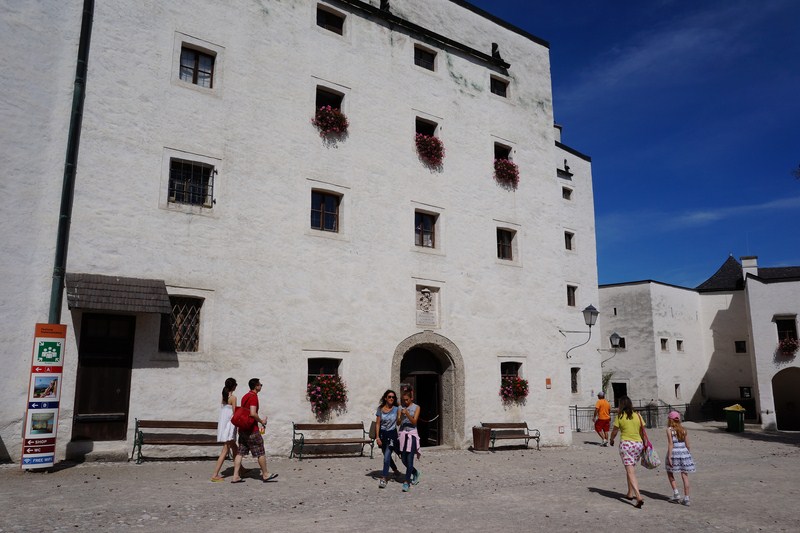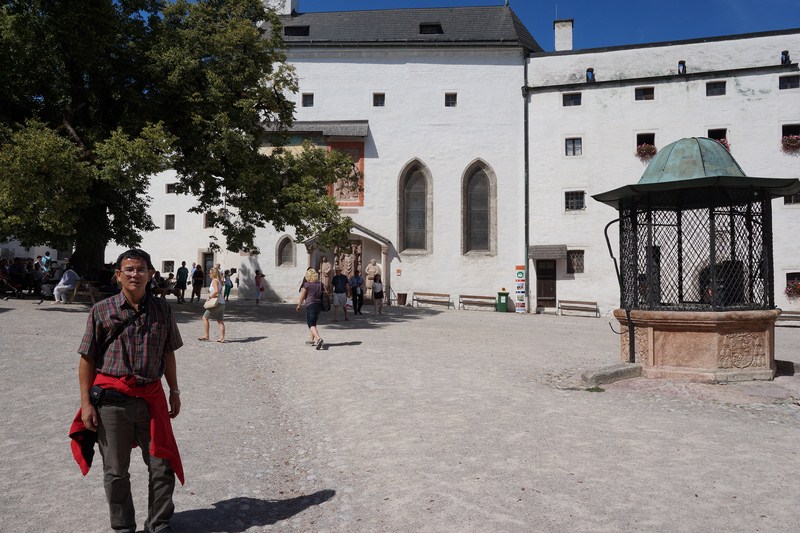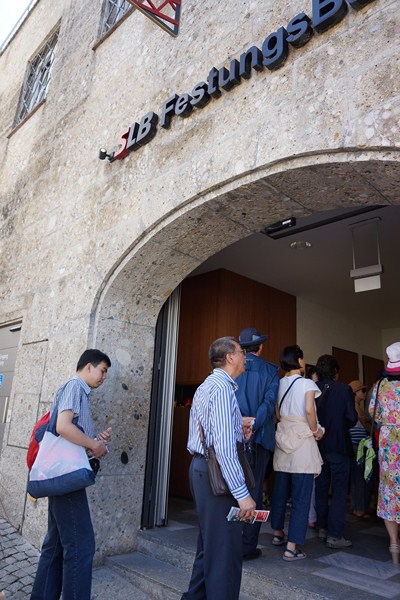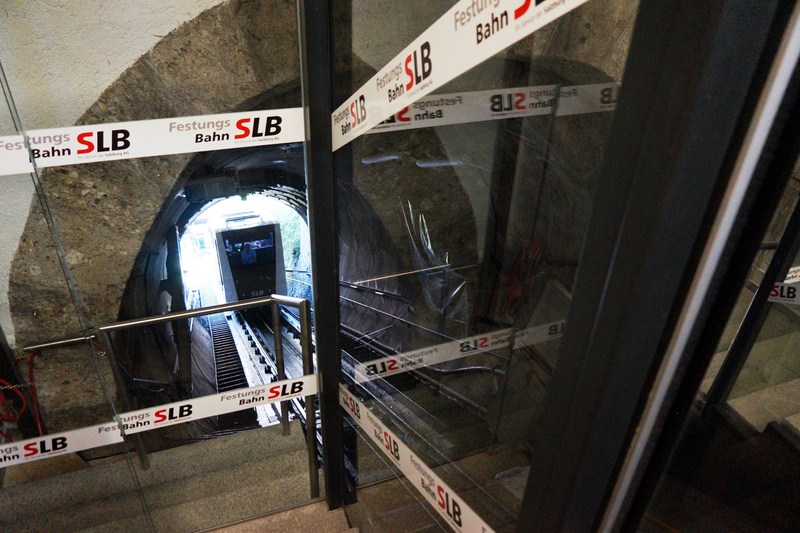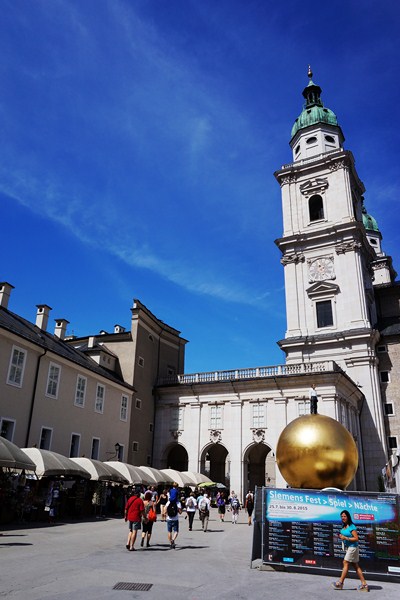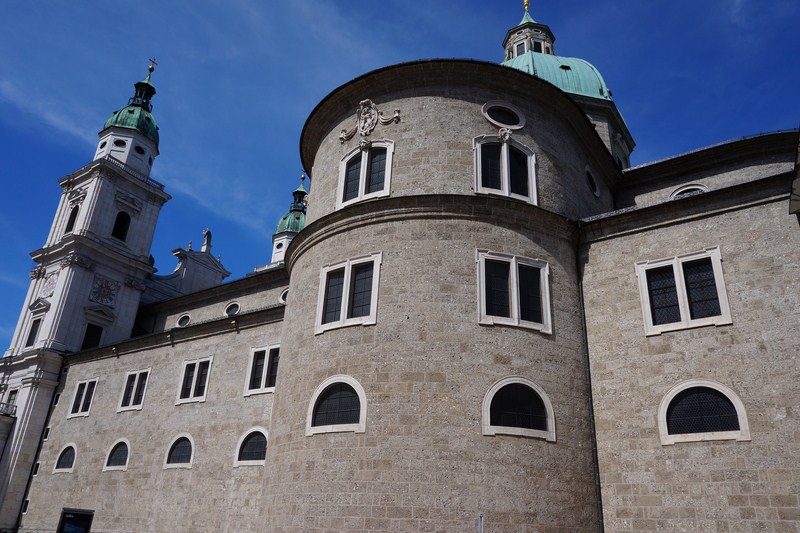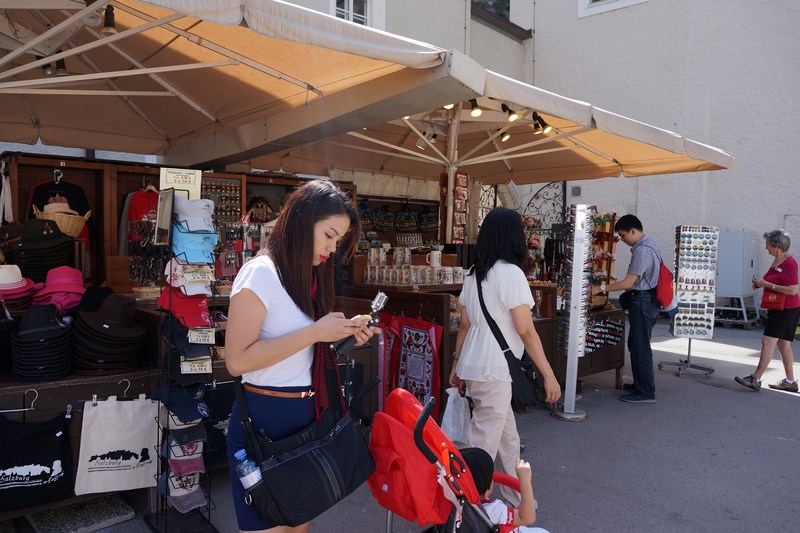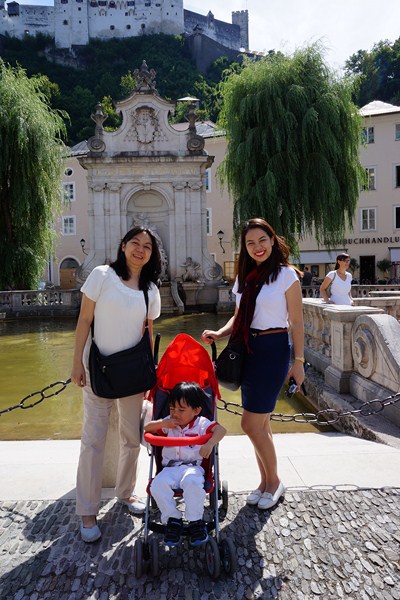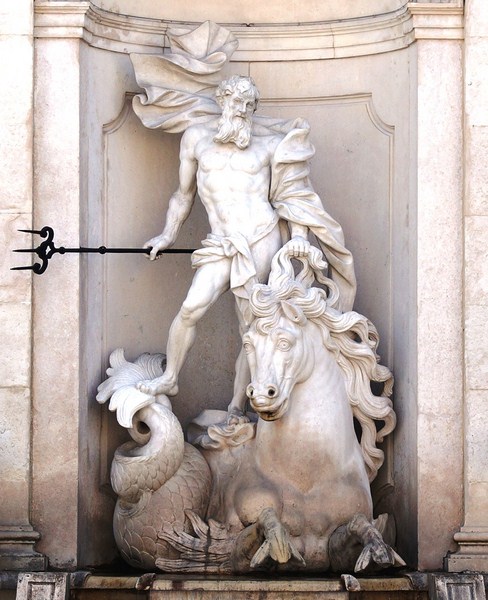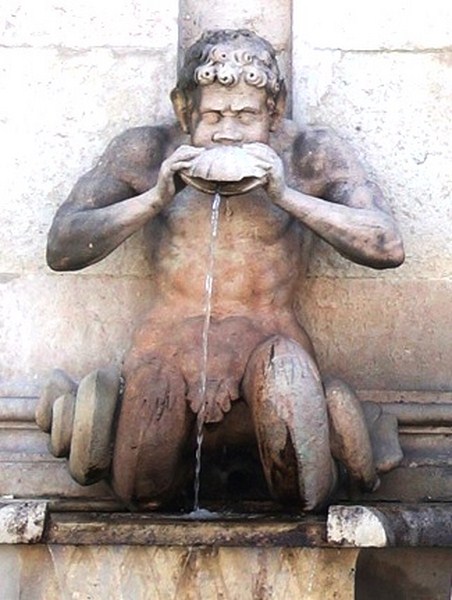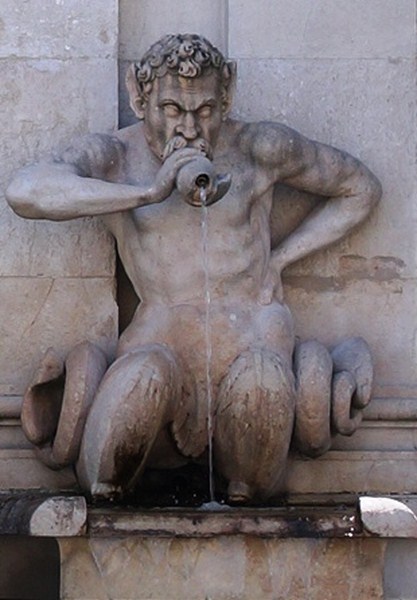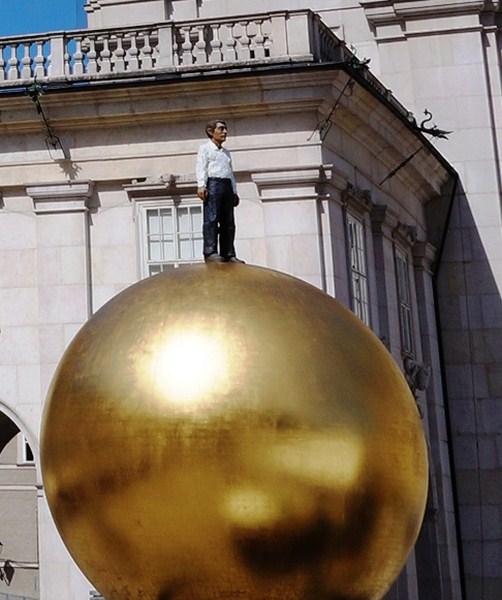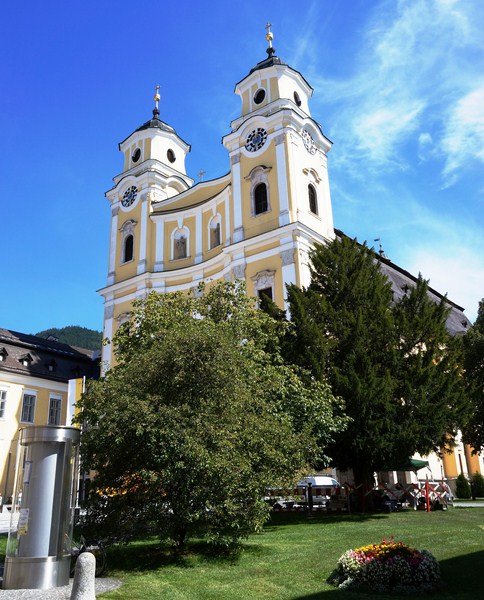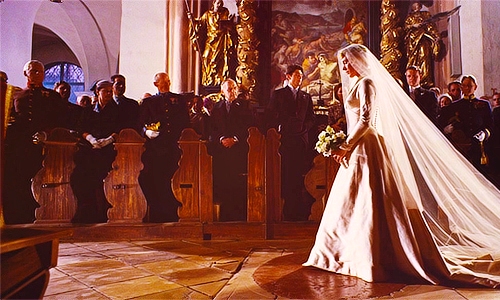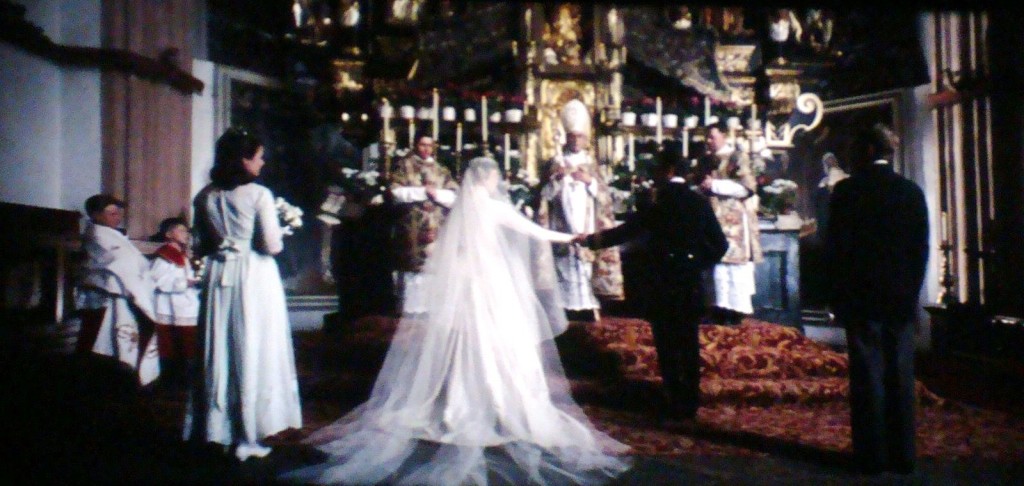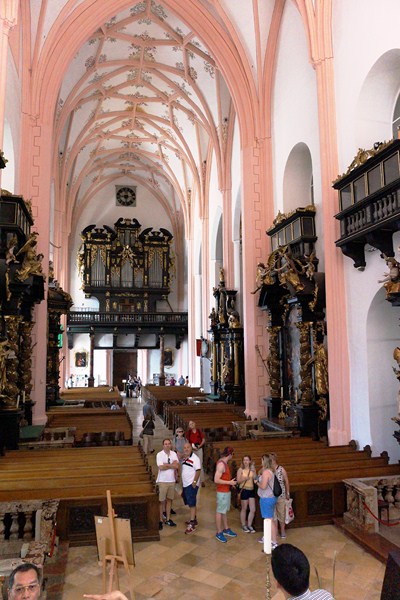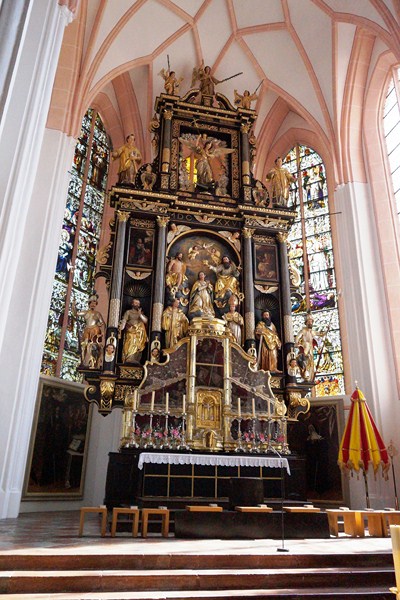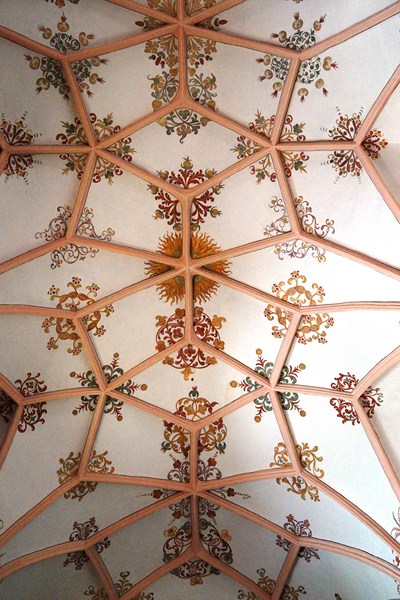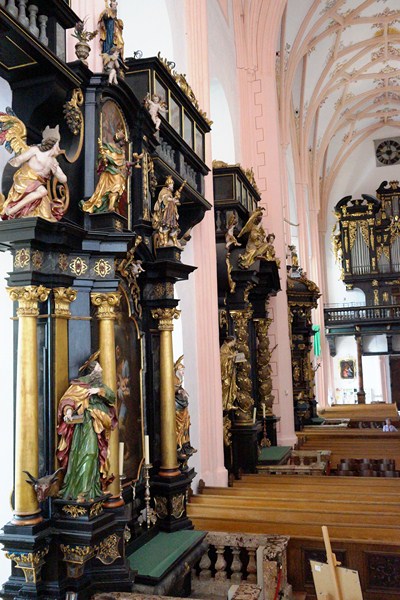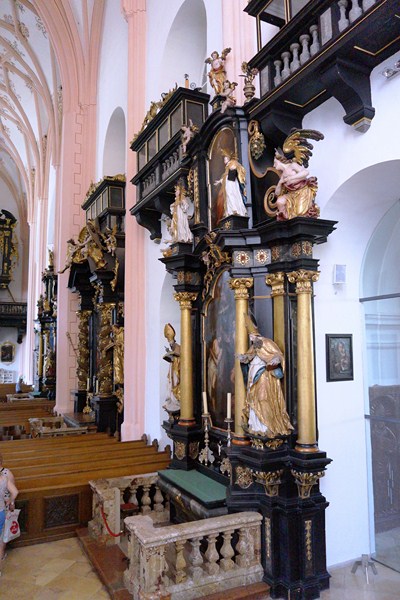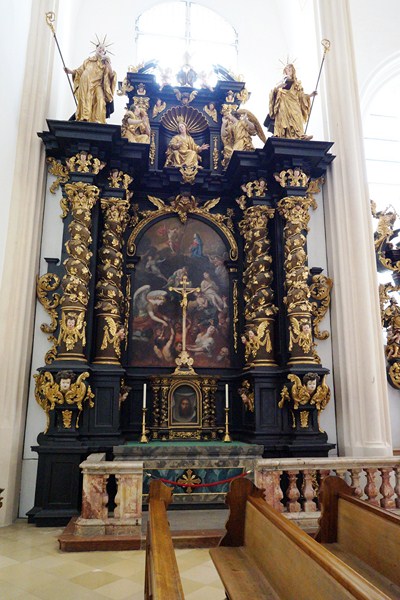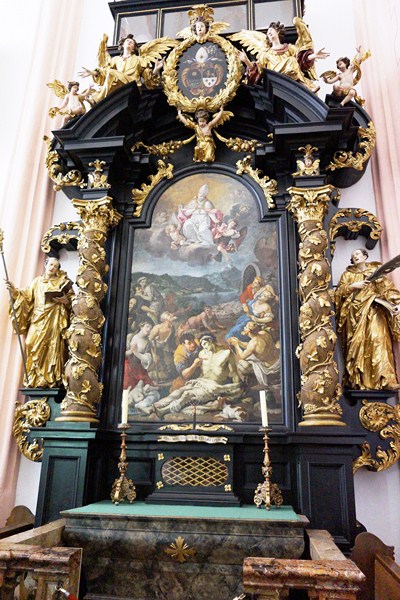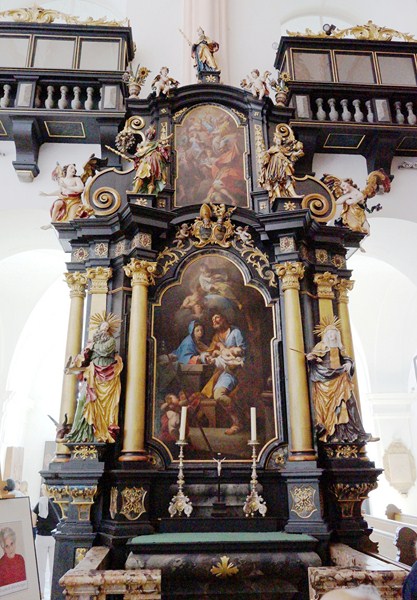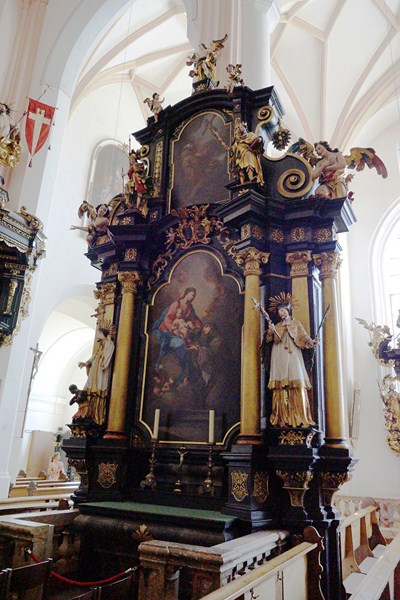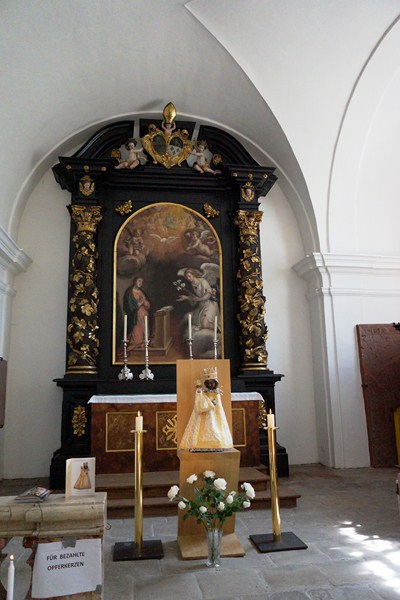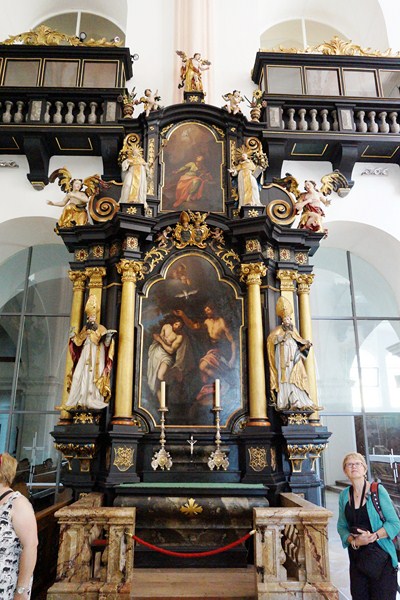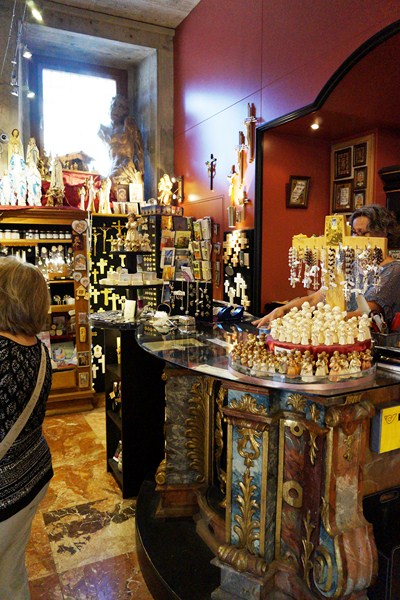The bright-yellow Mozart’s “Geburtshaus,” one of the most frequently visited sights and places of interest in Austria, was the birthplace (January 27, 1756) of the world famous Wolfgang Amadeus Mozart, Salzburg’s ‘Wunderkind.’ Leopold Mozart (a musician of the Salzburg Royal Chamber) and his wife Anna Maria Pertl (whom he married on November 21, 1747), lived on the house’s third floor for a total of 26 years, from 1747 until 1773 when the family moved to the house we know today as the “Mozart Residence,”standing on Makartplatz Square. Seven children were born here but only two, Wolfgang Amadeus (the seventh) and his sister Maria Anna (‘Nannerl’), survived.
The house, built in the 12th century, sits on ground which had been part of the garden belonging to the Benedictine monks of St Peter’s, Salzburg. Otto Keutzel, a merchant, is mentioned as the owner in 1408. In 1585, Chunrad Fröschmoser, the court apothecary (the coiled serpent in the lion’s mouth, the symbol of Asclepius on the doorway, testifies to his ownership), purchased the property.
In 1703, the house came into the ownership of the Hagenauer family (the house is also called the Hagenauer Haus or “Hagenauer House”) who had arrived in Salzburg around 1670. Specifically, they included Joseph Matin Hagenauer and Johann Laurenz Hagenauer (merchant, purveyor of spices and friend and landlord of the Mozart family).
The third floor then consisted of a kitchen, a small cabinet, a living-room, a bedroom and an office. In 1880, the International Mozarteum Foundation set up the first museum in Mozart’s ‘Geburtshaus.’ Over the decades, the house has undergone a systematic process of remodeling and expansion.
The three current exhibitions, set up by Thomas Wizany (architect and caricaturist for the Salzburger Nachrichten newspaper), highlighted three themes: “Mozart and Salzburg University,” “Mozart’s Friendships with Salzburg Families” and “Church Music and Saintly Veneration,” are centered on Mozart’s original instruments (passed on from Mozart’s widow, Constanze Nissen, through her sons Carl Thomas and Franz Xaver Wolfgang, and now owned by the International Mozarteum Foundation) and authentic portraits. The displays also feature typical everyday furniture and objects used by Mozart’s contemporaries.
Here, at this typical family home during the Mozart, we went through the original rooms in which the Mozart family lived and learned details of the early life of the composer – the domestic circumstances in which he grew up, when he began to play music, who were his friends and patrons, his relationship with his family, his passionate interest in opera, and much more.
The displays presented a range of artifacts. Period furniture at the first floor replicates living conditions in Mozart’s day while original documents and paintings illustrate his life in Salzburg. The second floor is devoted to Mozart’s interest in opera and includes the clavichord on which he composed The Magic Flute.
The third floor exhibits Mozart’s childhood violin, harpsichord, as well as the majority of the portraits painted during his lifetime (including “Wolfgang Amade Mozart at the Piano,” the unfinished oil portrait, one of Mozart’s striking portraits, painted by Mozart’s brother-in-law Joseph Lange in 1789), keepsakes (a lock of his hair, buttons from his jacket, etc.) mementos, documents, letters belonging to the Mozart family, and early editions of his music. There are also records of his life in Vienna and of his wife and family.
Mozarts Geburtshaus: Getreidegasse 9, 5020 Salzburg, Austria. Tel:+43 (0) 662 844313. Fax:+43 (0) 662 84 06 93. E-mail: museum.service@mozarteum.at. Open daily 9 AM- 5:30 PM; daily, 8:30 AM -7 PM (July, August) and 9 AM -3 PM (December 24). Last admission is 30 mins. before closing. It is closed periodically, during Mozart Week, when concerts take place. Guided tours are by prior arrangement. The museum is not wheelchair-accessible and dogs are not allowed (except assistance dogs).
Admission: €11.00 (adults), €3.50 (children, 6-14 years), €4.00 (youth, 15-18 years), €9.00 (handicapped persons with ID, accompanying person free, if indicated on the ID), €23.00 (families, 2 adults and children under 18). €9.00 for groups of 10 adults or more (per person), students (up to 27 years) and senior citizens and €3.00 for school groups (6-18 years) per person. SalzburgCard: one time free admission


